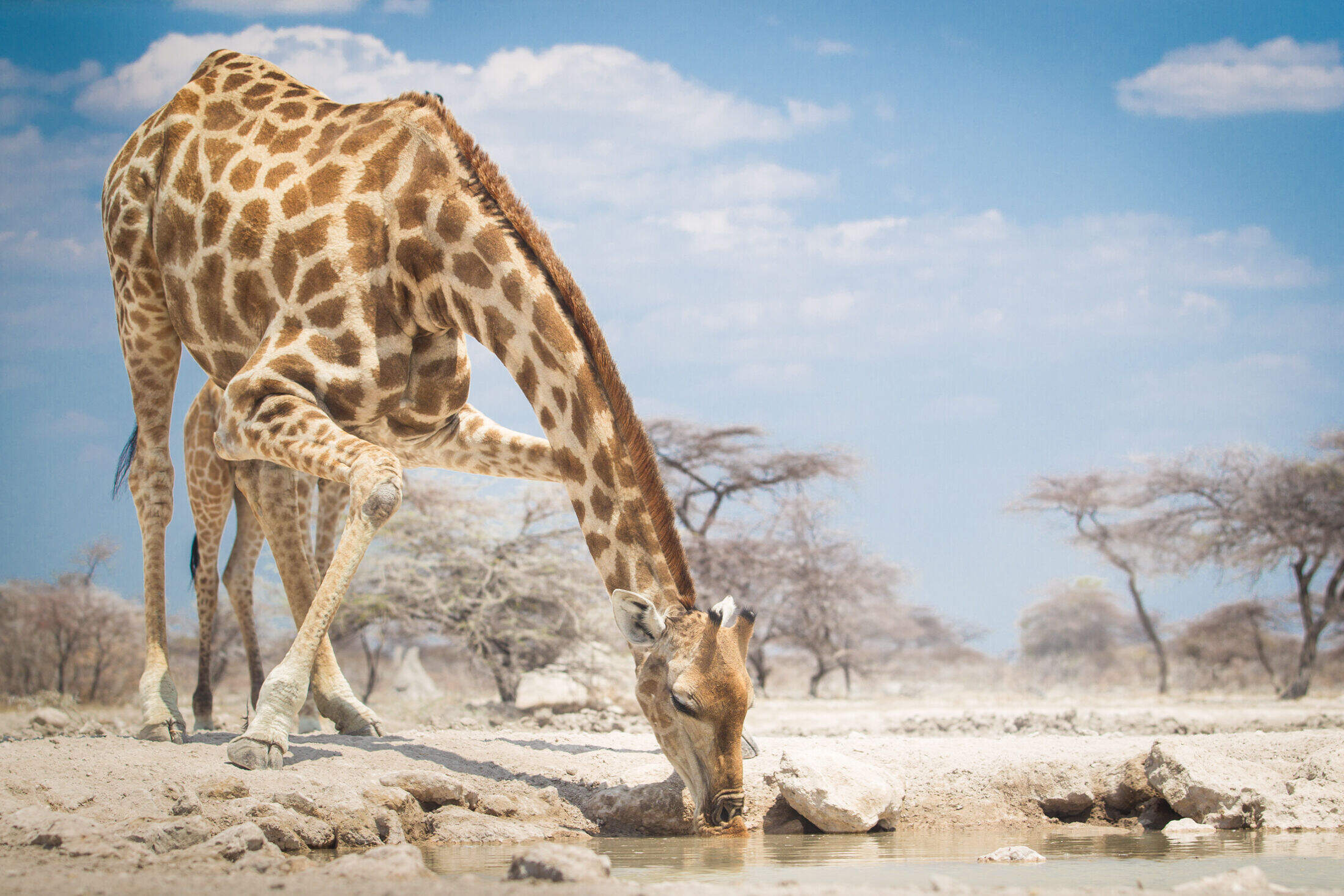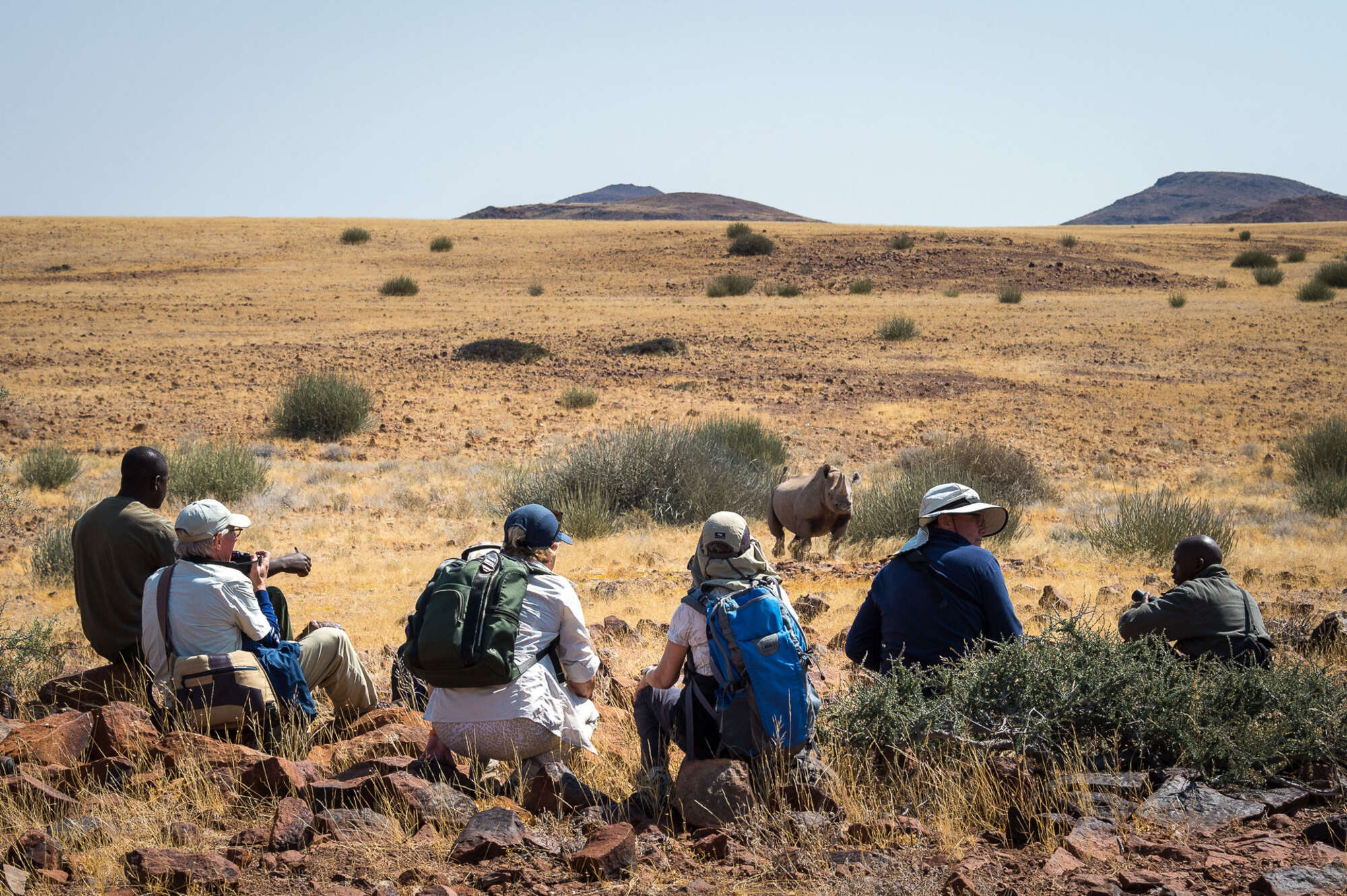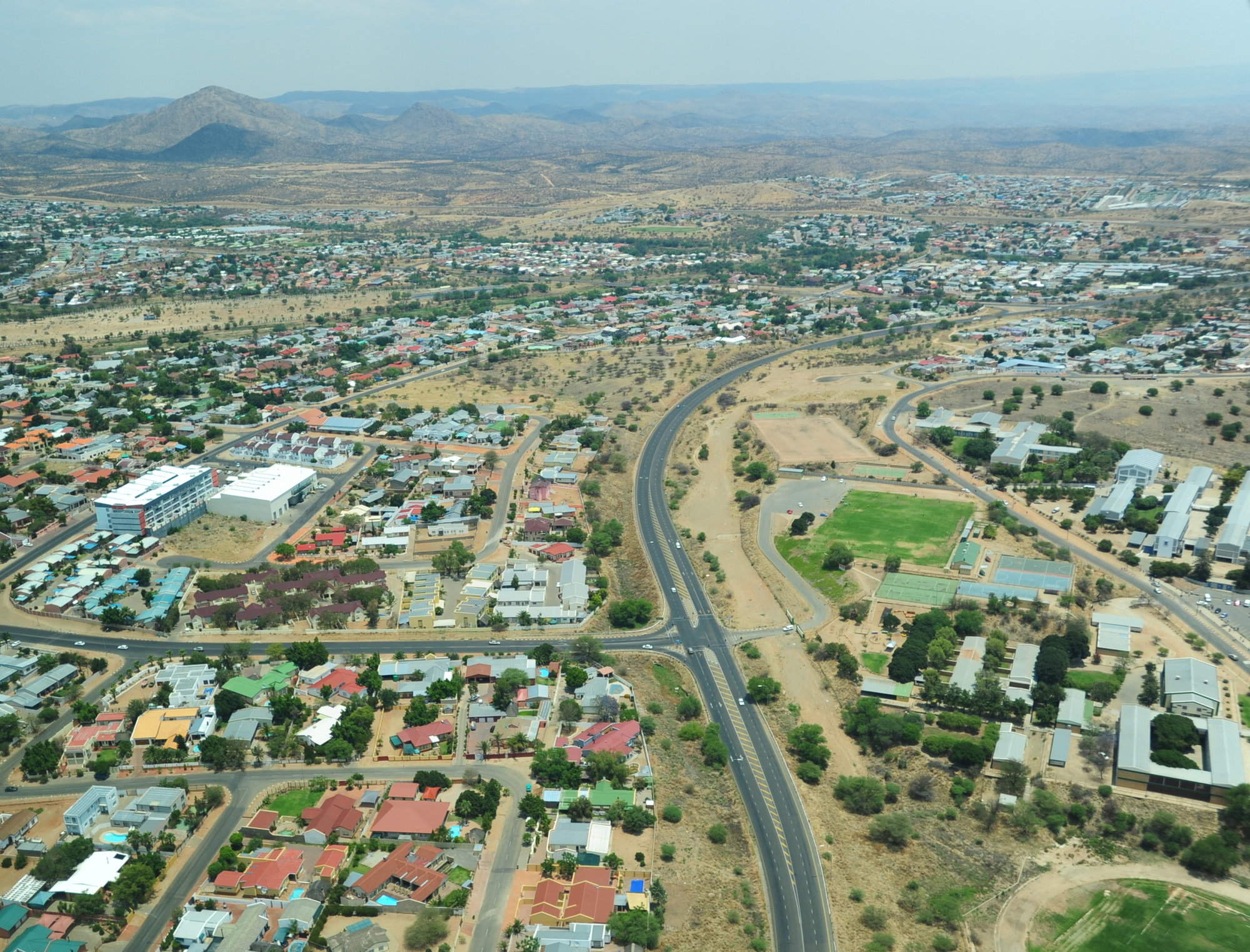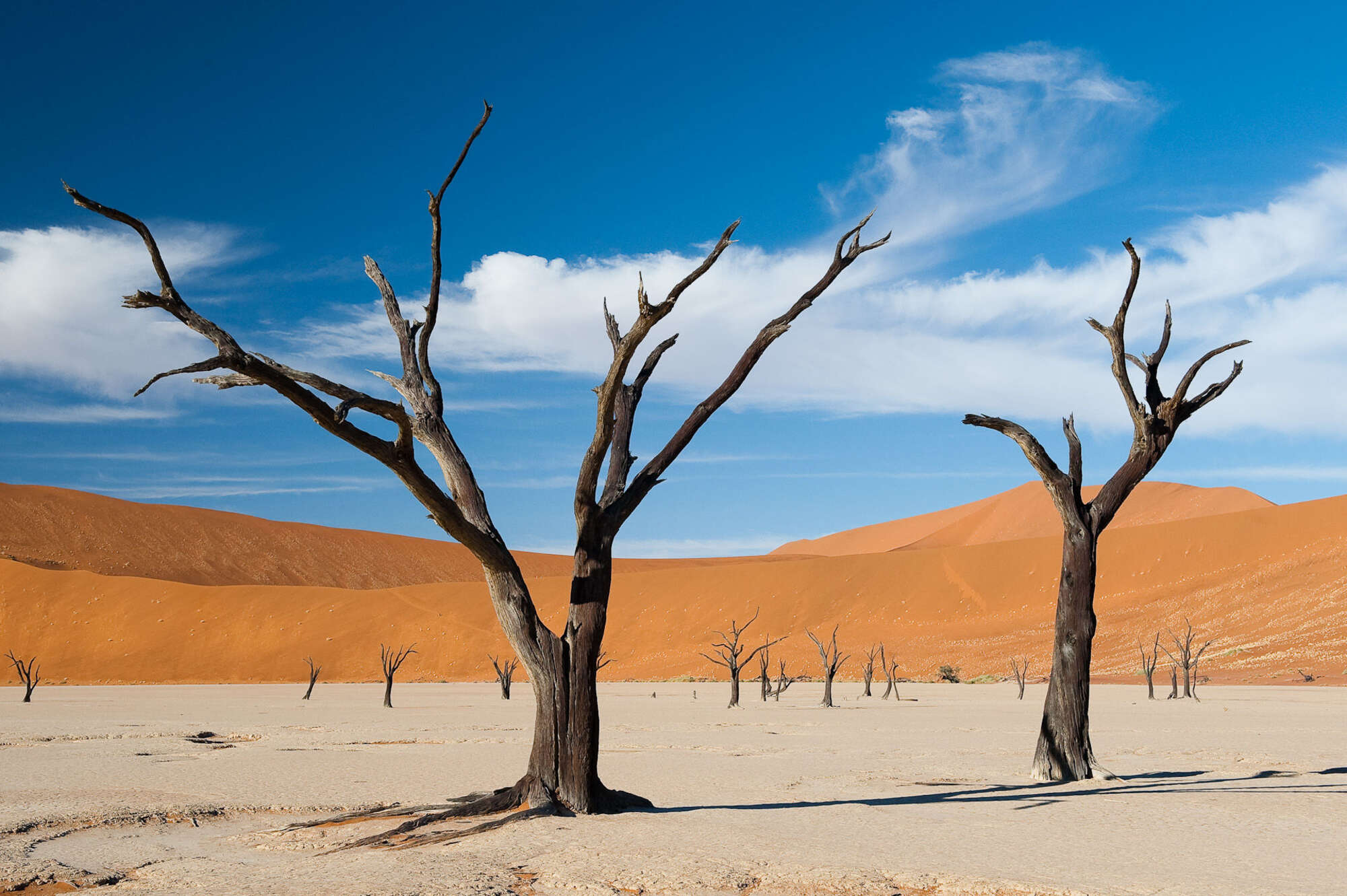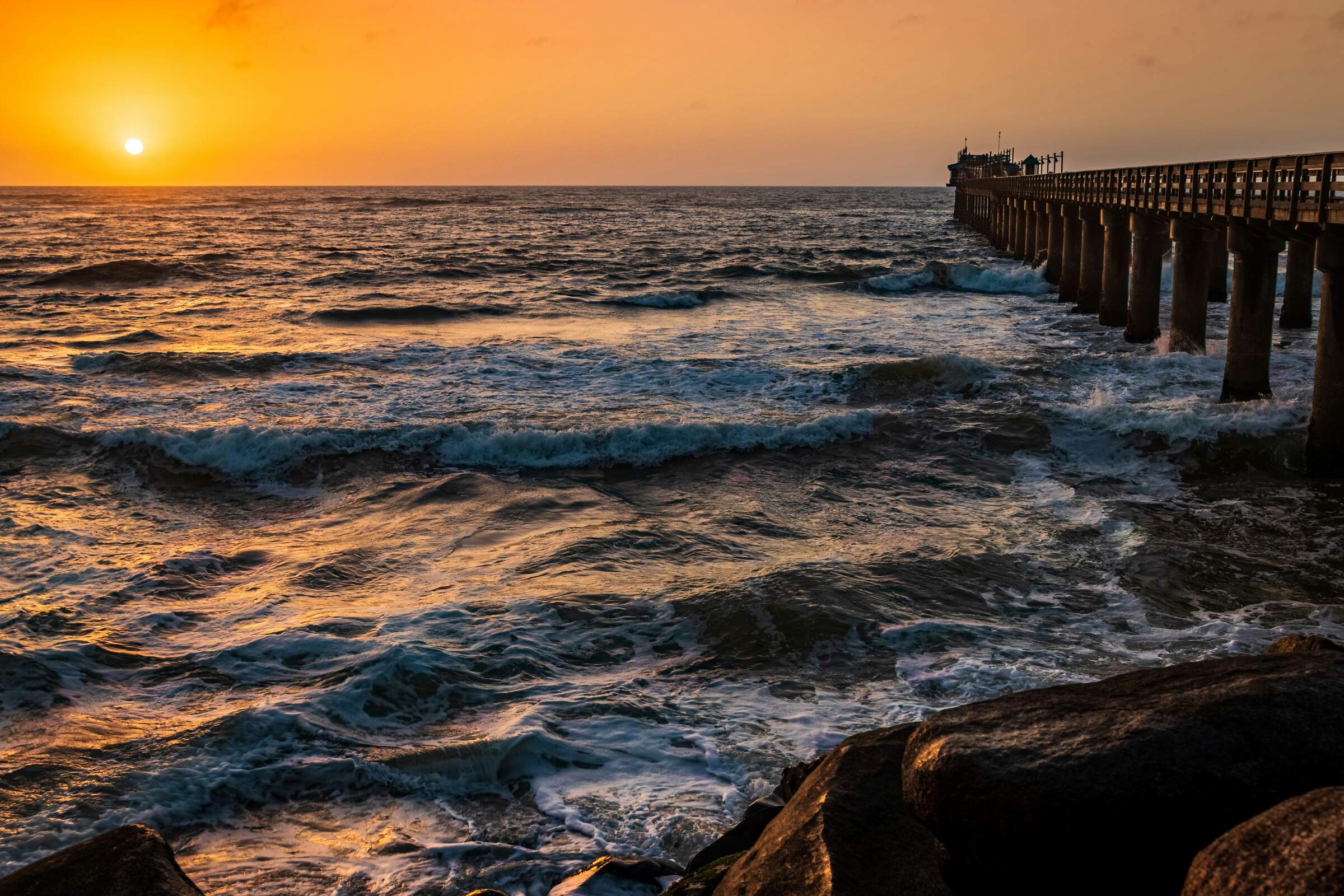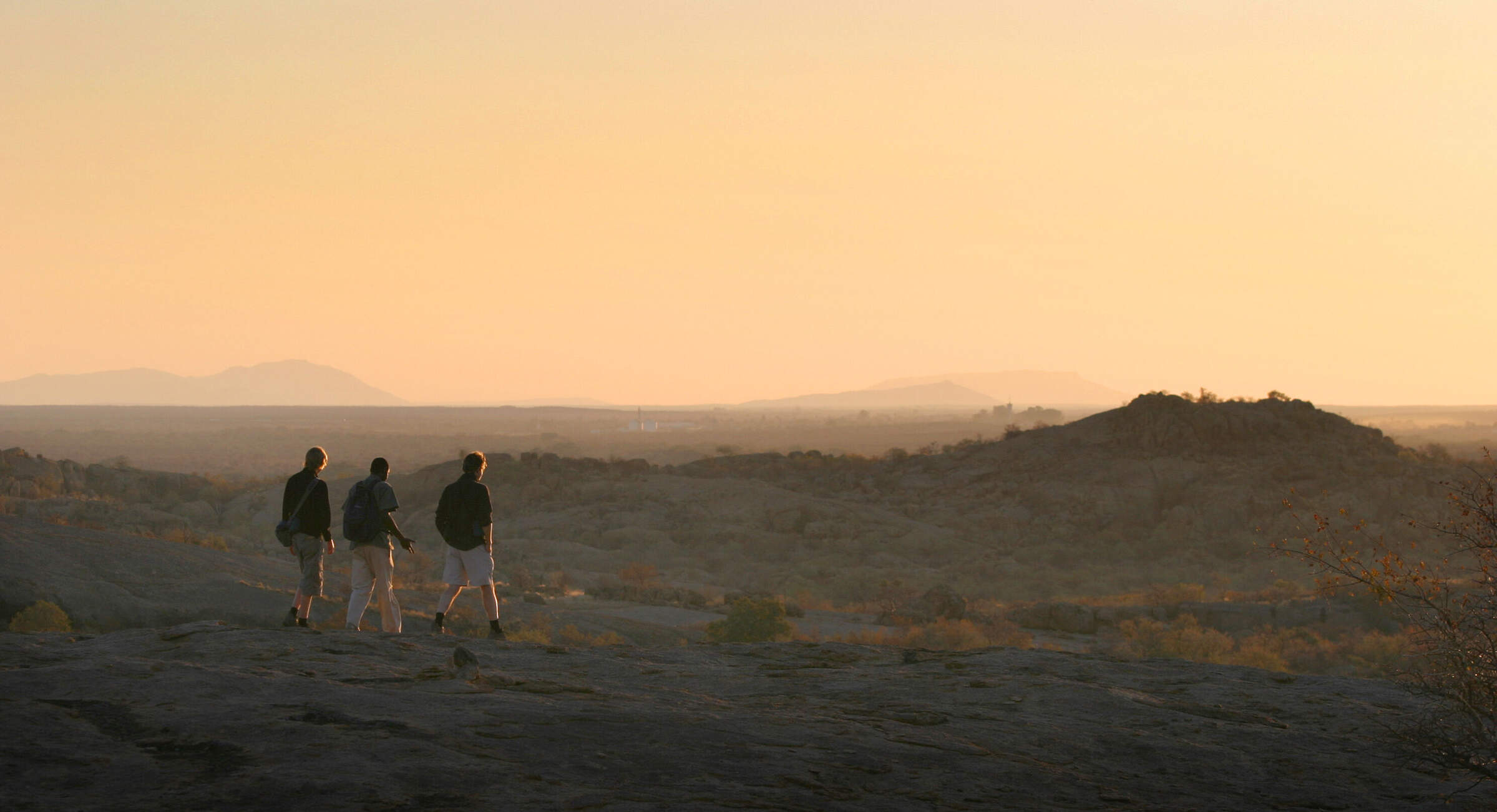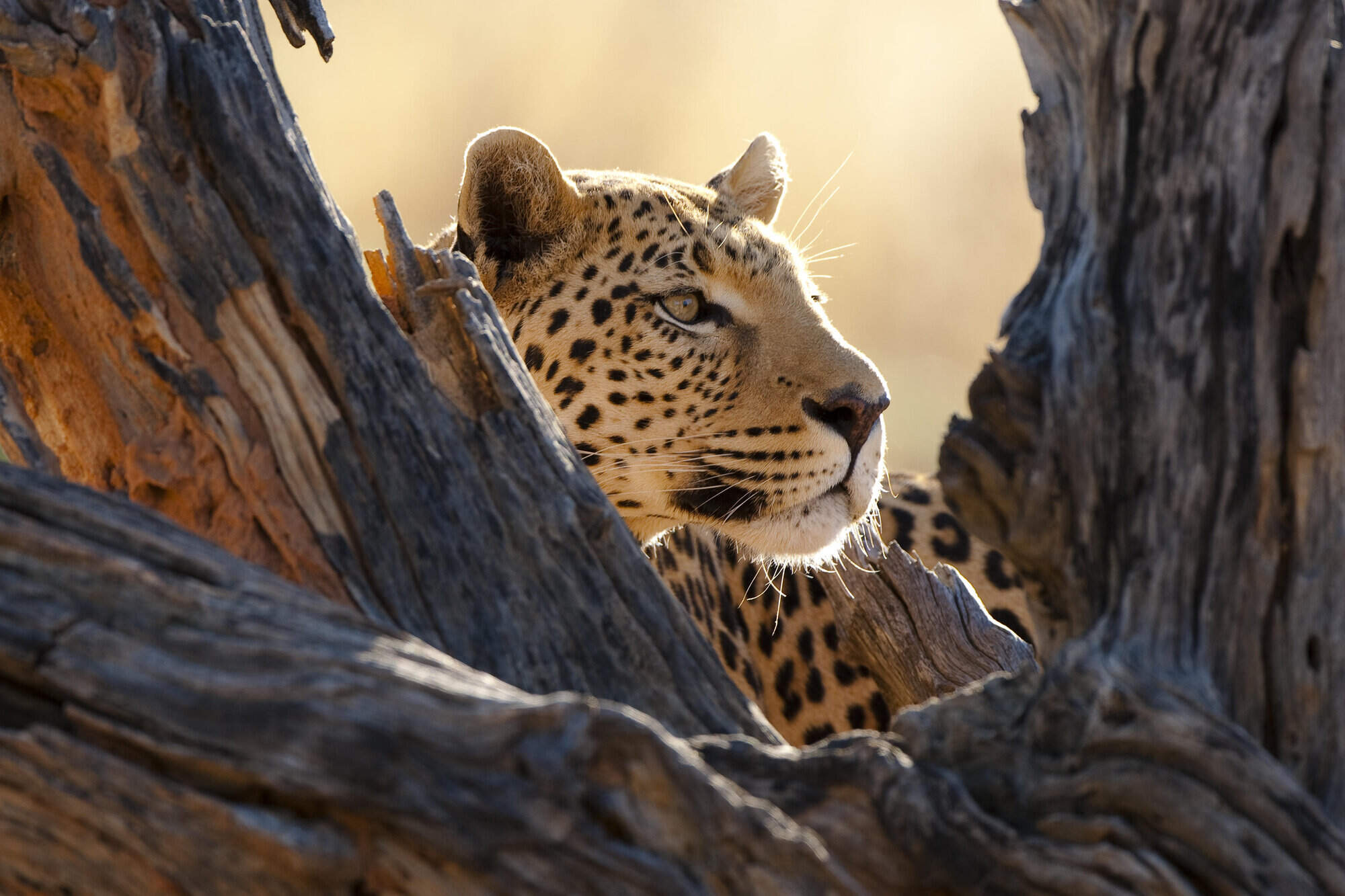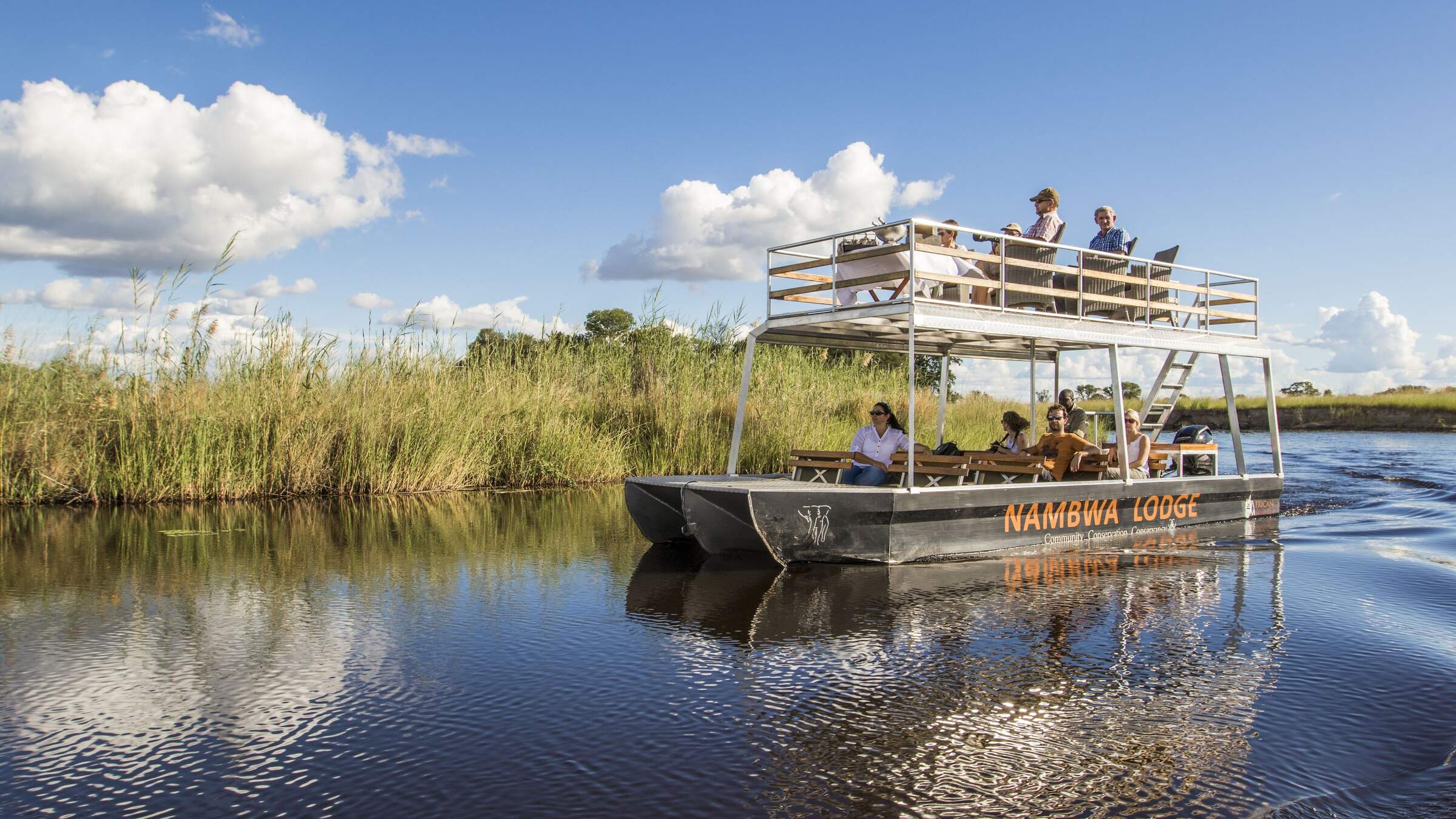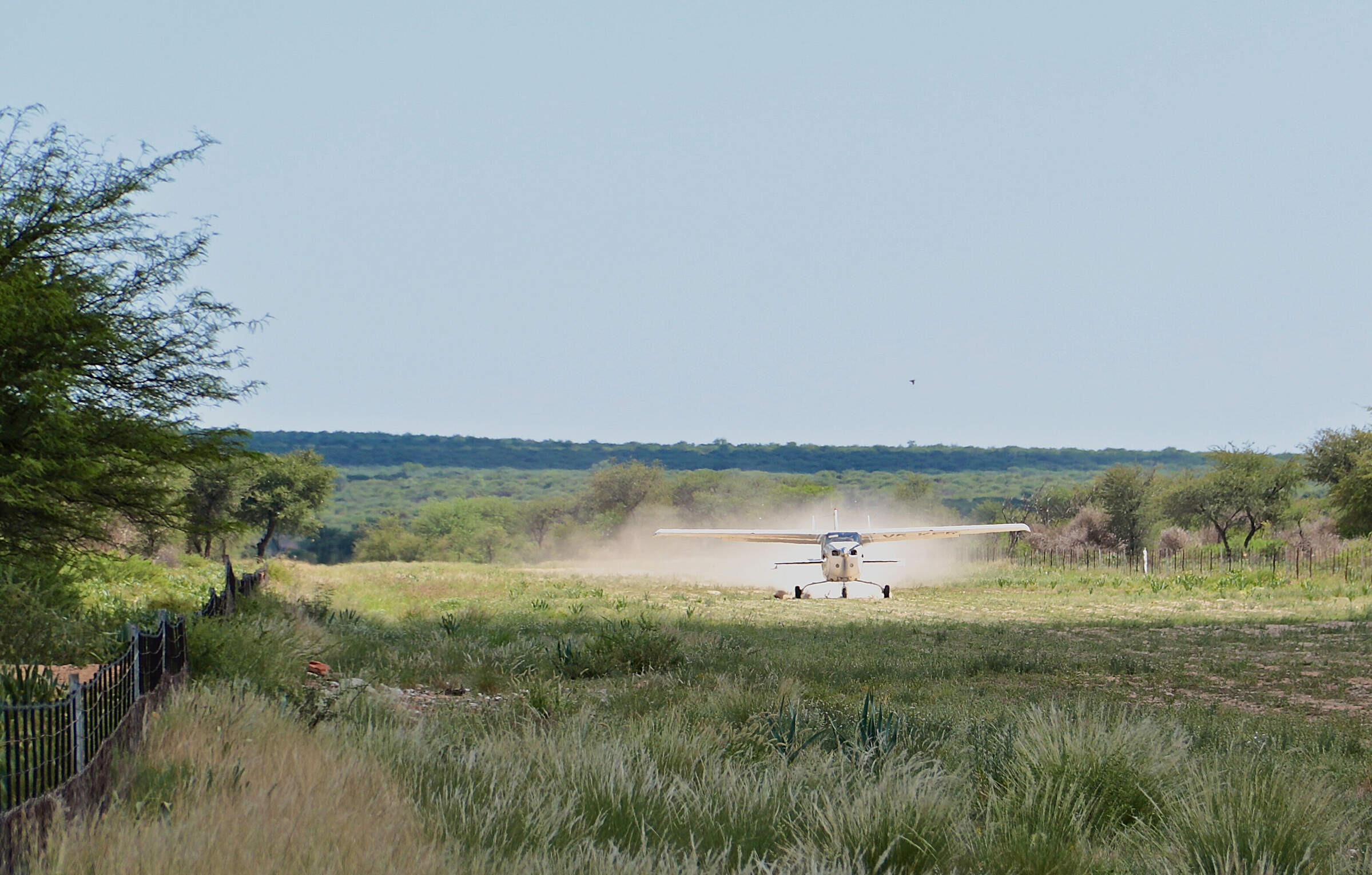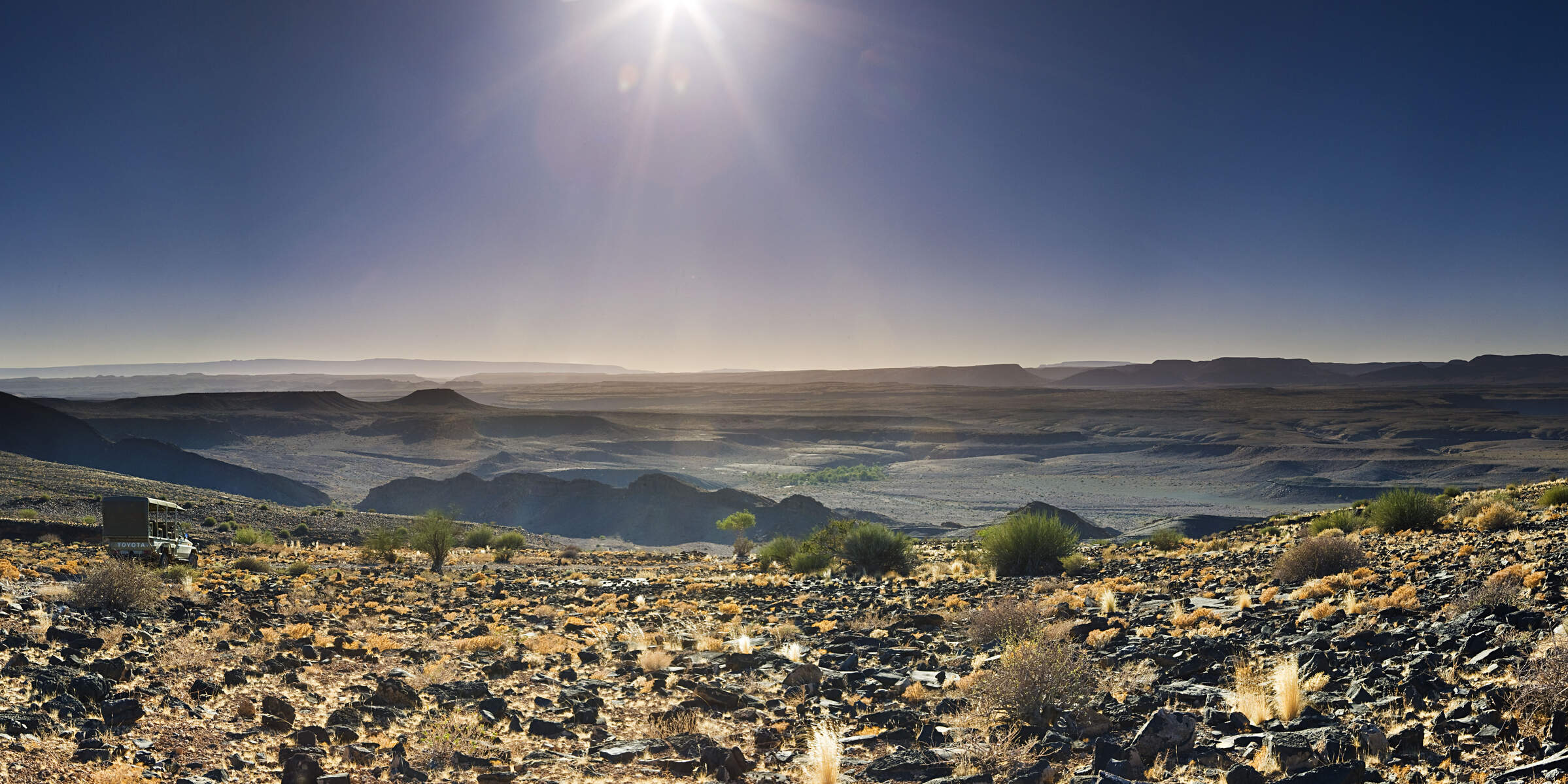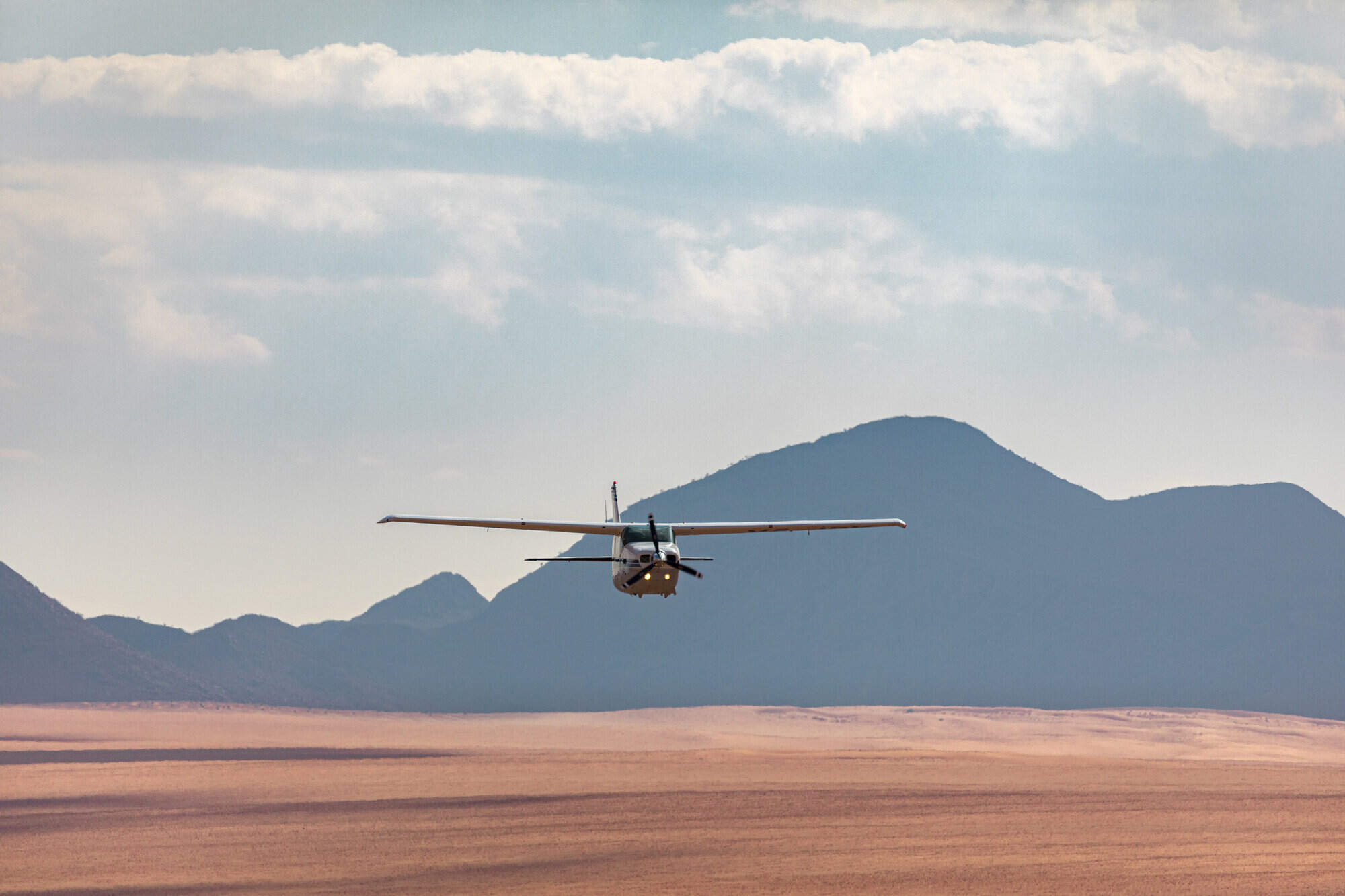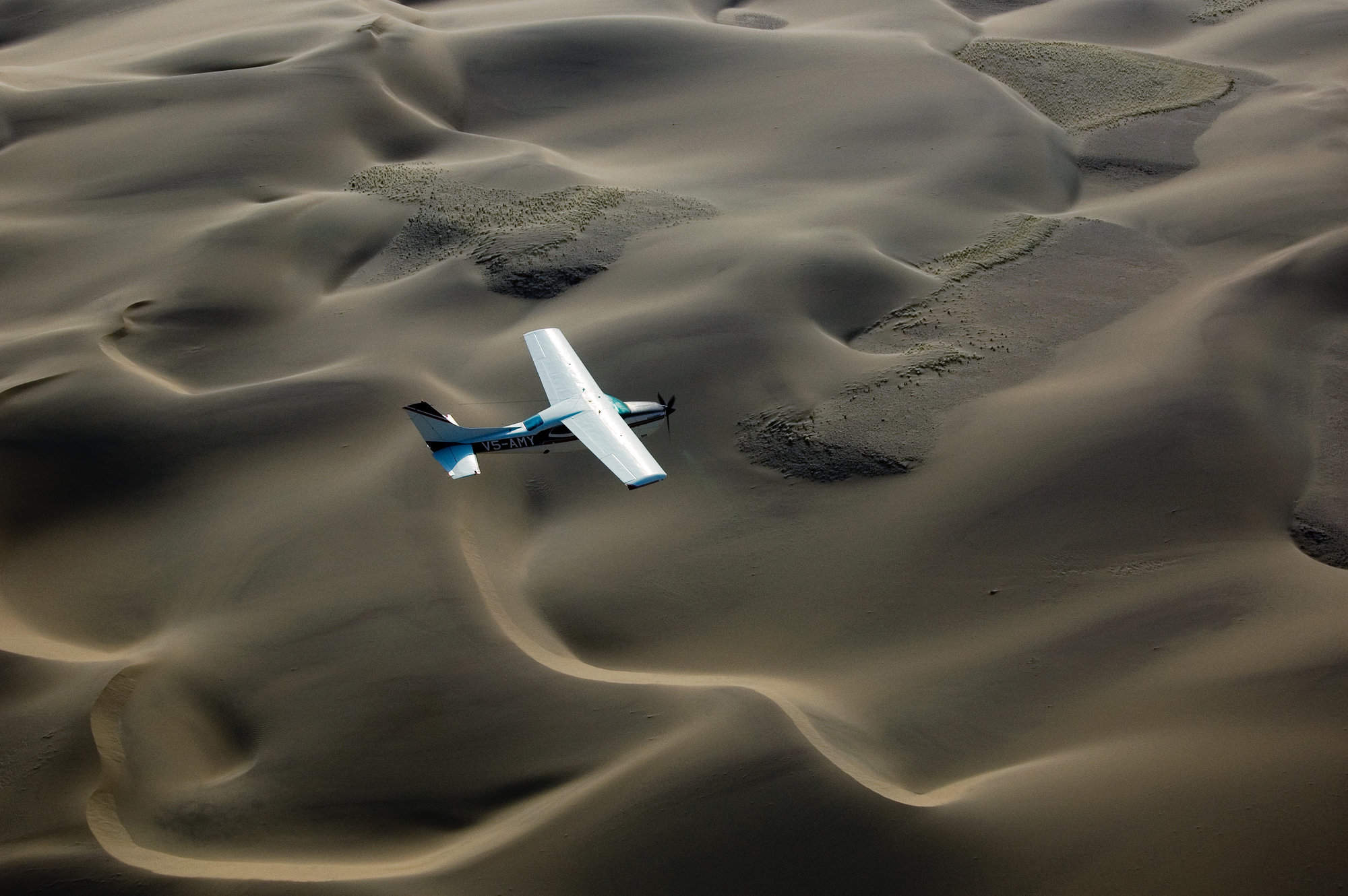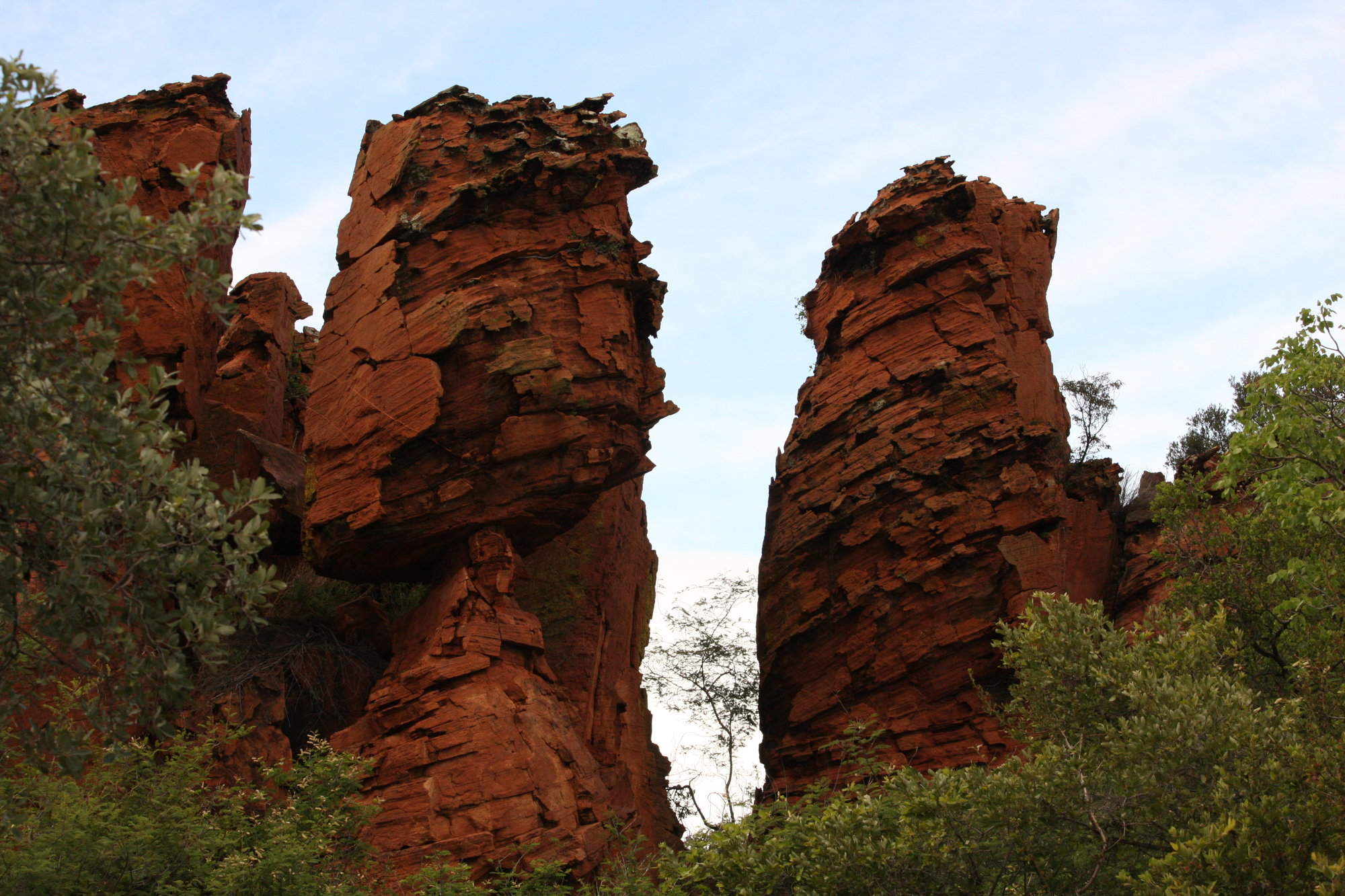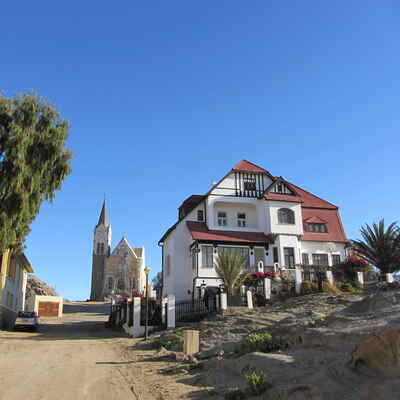
initially named Angra Pequena
boat trips to Halifax Island
African penguins
the abandoned mining town of Kolmanskop.
The views are definitely worth stopping to savour.
The historic Goerke House, an interesting museum.
sundowners at the old jetty
a pleasant town to stroll round.
Luderitz
Luderitz
Explorers, diamonds, ghost towns: if Lüderitz sounds like something out of an adventure thriller, prepare to be drawn in.
The final “barrier” of marching sand dunes on the only road in simply adds to the sense of excitement – and the feeling of being cut off from the outside world.
Diamonds may no longer litter the desert floor, and the miners are long gone, but their heritage remains as an extraordinary reminder of the riches made. To stroll through the heart of Lüderitz is to wander through history, along streets lined with colonial buildings in improbable hues of reds, oranges and yellows.
Make time for the exquisite Goerke Haus, high up on a hill overlooking the town, explore the windswept beaches of the peninsula, and finish the day with a platter of seafood – freshly caught in the freezing waters of the Atlantic.
Those waters also support colonies of Cape fur seals, which can be seen on a boat trip around the peninsula. Dolphins, too, are regularly spotted cavorting around the boats, and African penguins, make their home on Halifax Island.
But head inland and the world turns to sand: soft, soft sand that is steadily, relentlessly burying the former mining towns. A must for photographers and historians alike, Kolmanskop is easily visited on a day trip, even from Aus, though for others, deeper in the Sperrgebiet or “forbidden zone”, a special permit is still required.
If Aus itself, at the other end of the road, is unremarkable, its crossroads location has a small place in World War I history, while the surrounding desert supports an unlikely herd of feral horses. The scenery is superb and the hills offers some excellent walking – making the cluster of places to stay here well worth consideration.
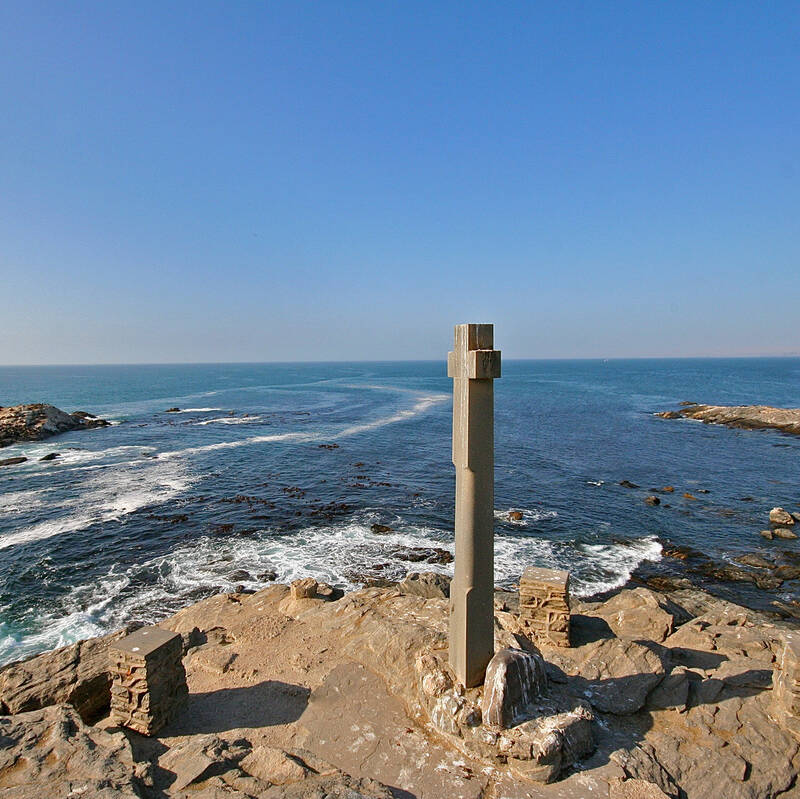
Trips visiting Luderitz & Aus
Just ideas, we'll always tailor-make a trip for you
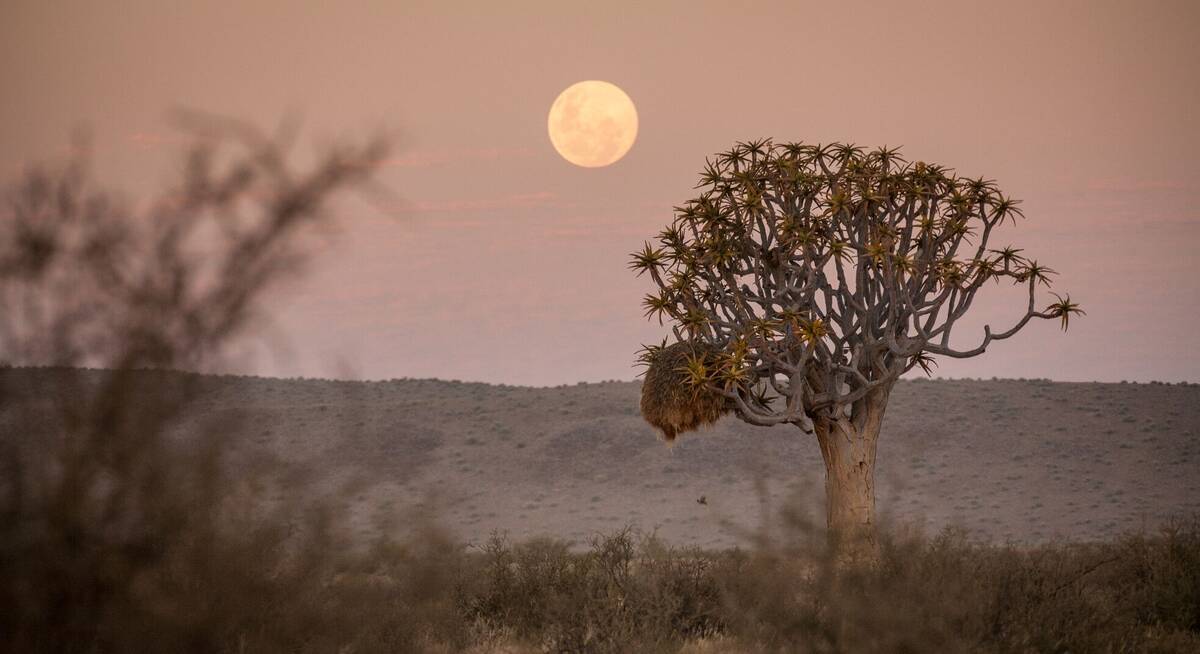
Quiver Tree Self-drive Safari
14 days • 7 locations
WINDHOEK AIRPORT TO WINDHOEK AIRPORT
An offbeat Namibian self-drive adventure exploring the epic Fish River Canyon and fascinating Kolmanskop ghost town in the south, before turning north via the classic highlights of Sossusvlei, Swakopmund and Damaraland.
US$3,520 - US$3,730 per person
Most recent reviews of our trips to Luderitz & Aus
Click below to browse all 185 reviews from Luderitz. All from our travellers; all are in full & unedited.
Arrived 1 May 2025, 19 nights
"My May 2025 trip"
Overall rating: Excellent
Arrived 7 Dec 2024, 12 nights
"My Dec 2024 trip to Namibia"
Overall rating: Excellent
Arrived 3 Nov 2024, 20 nights
"Cape Town to Fish River and back"
Overall rating: Excellent
Arrived 2 Sep 2024, 24 nights
"My Sep 2024 trip"
Overall rating: Excellent
Arrived 2 Sep 2024, 30 nights
"My Sept 2024 trip"
Overall rating: Excellent
Arrived 28 Aug 2024, 25 nights
"My Aug 2024 trip"
Overall rating: Excellent
Arrived 28 Aug 2024, 25 nights
"My Aug 2024 trip"
Overall rating: Excellent
Arrived 26 Jun 2024, 22 nights
"My Jun 2024 trip"
Overall rating: Excellent
Arrived 26 Apr 2024, 30 nights
"My Apr 2024 trip"
Overall rating: Excellent
Arrived 16 Apr 2024, 22 nights
"My Apr 2024 trip"
Overall rating: Excellent
Where to stay in Luderitz & Aus
Our suggestions for places to stay in Lüderitz & Aus
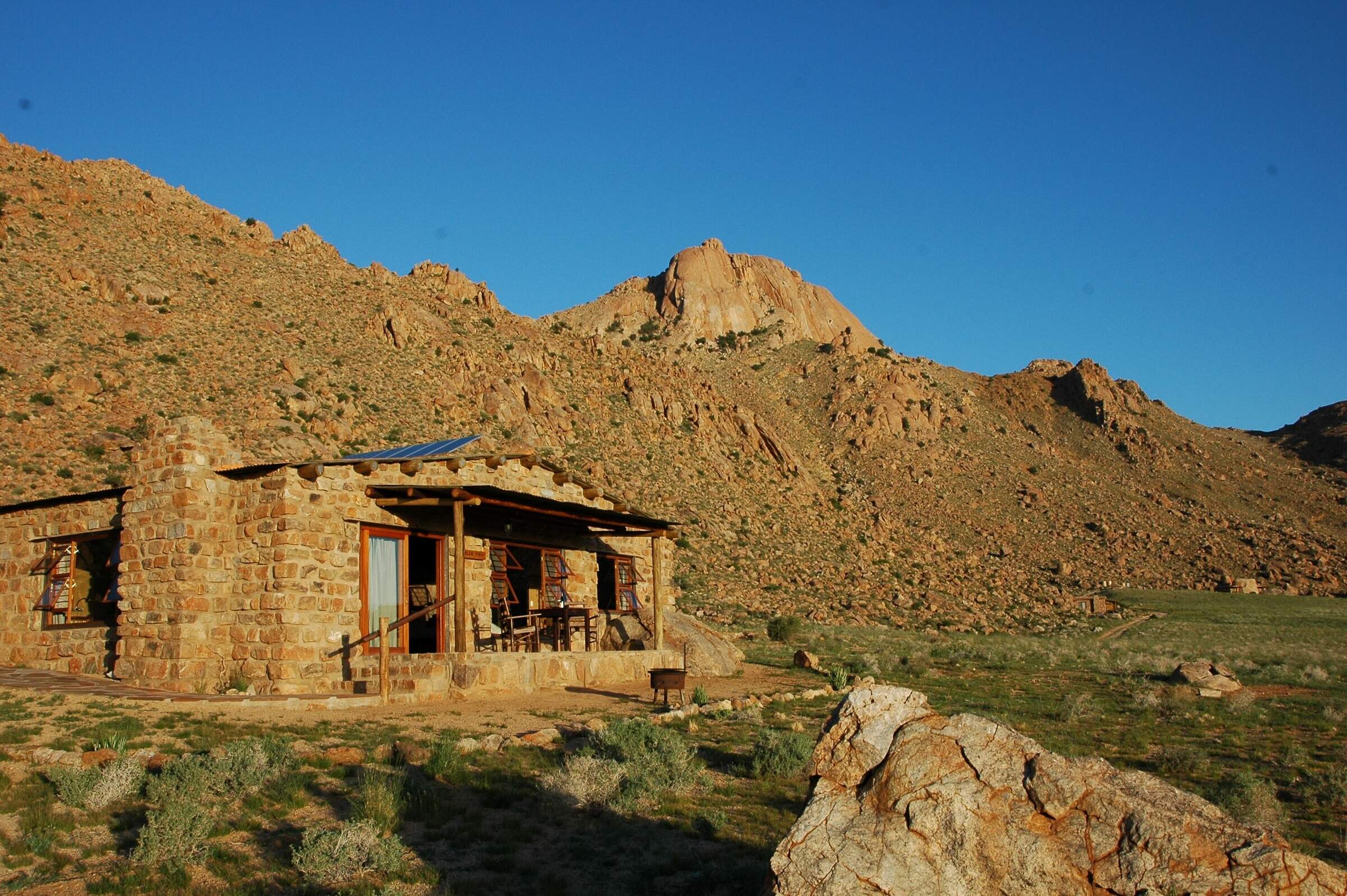
Eagle's Nest
The rustic chalets at Eagle's Nest on the Klein-Aus Vista reserve make a scenic base for hiking in the mountains, or just to enjoy the solitude.
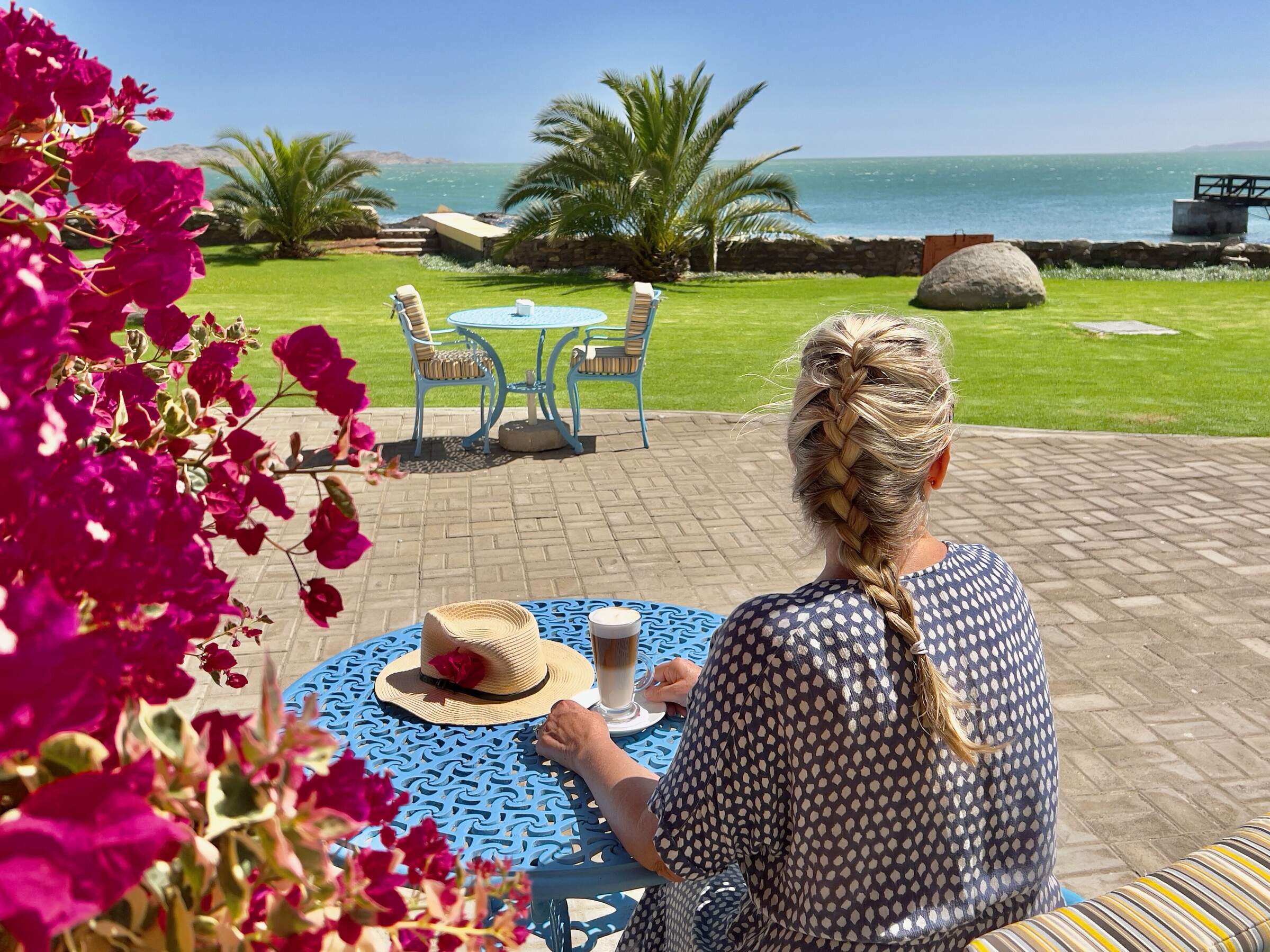
Nest Hotel
With ocean views from all its rooms, the Nest Hotel is perfectly placed to appreciate the best of Lüderitz.
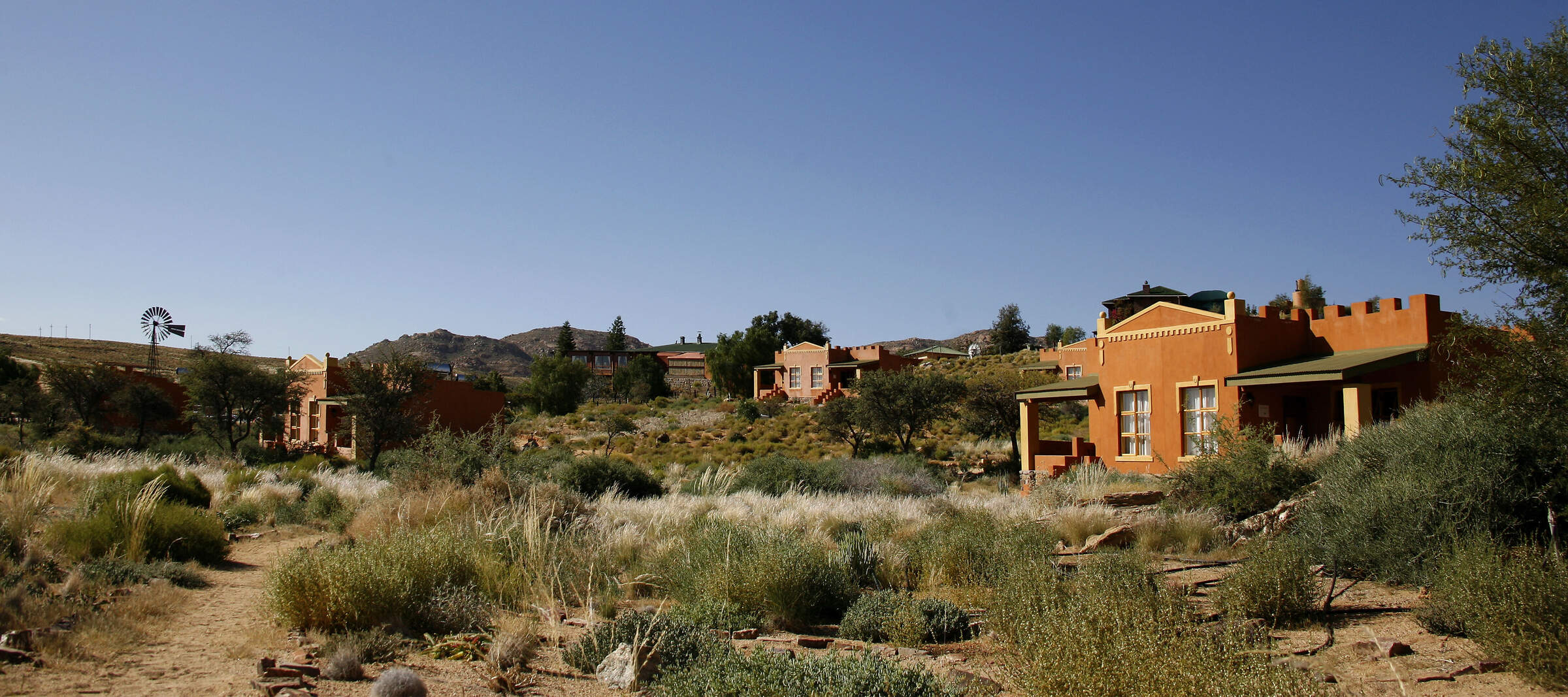
Desert Horse Inn
On the edge of the Namib Desert, the Desert Horse Inn makes a comfortable base for hiking, visiting Lüderitz, or seeking out the area's feral horses.
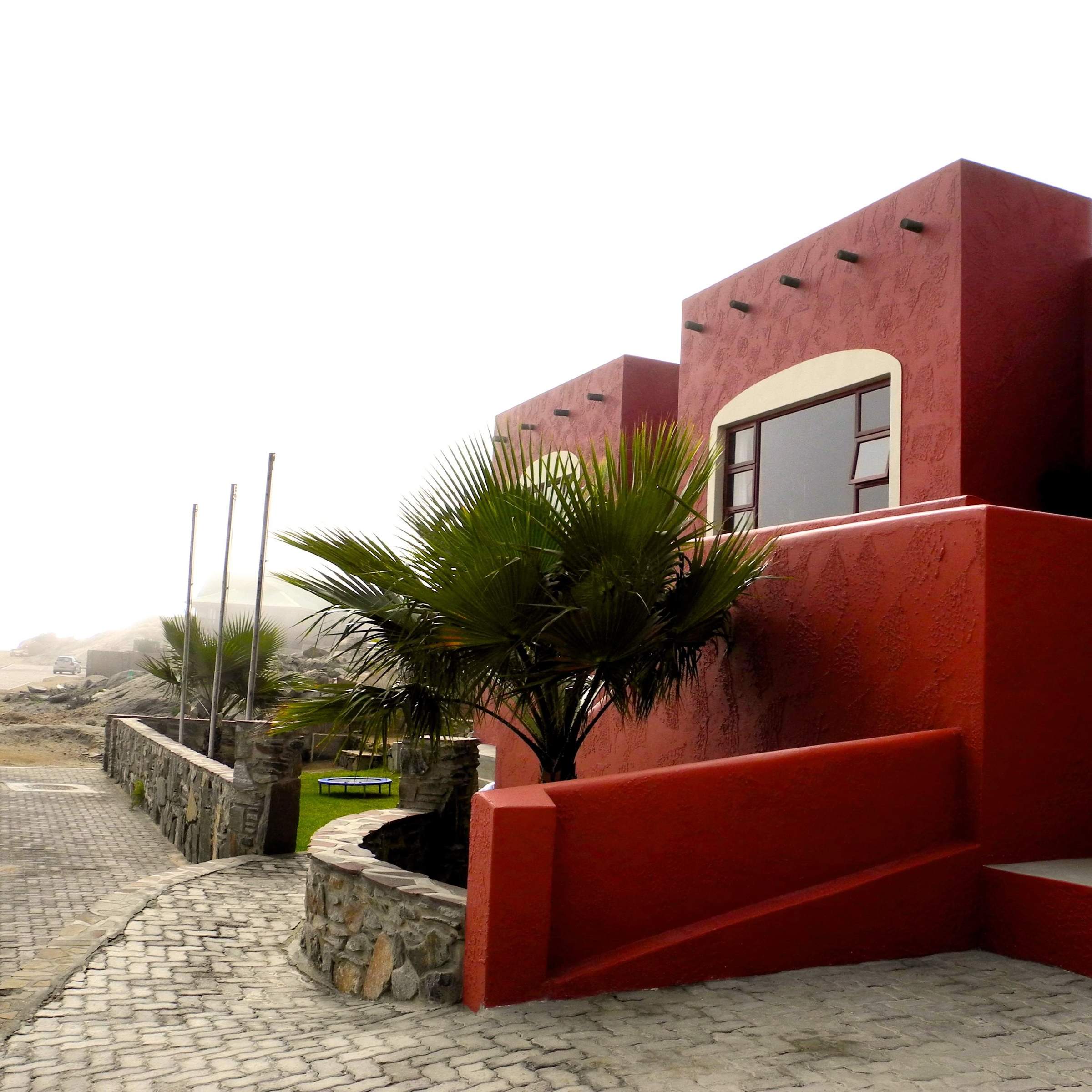
Island Cottage
Island Cottage offers simple but comfortable self-catering apartments in an attractive if desolate location overlooking Lüderitz Harbour.
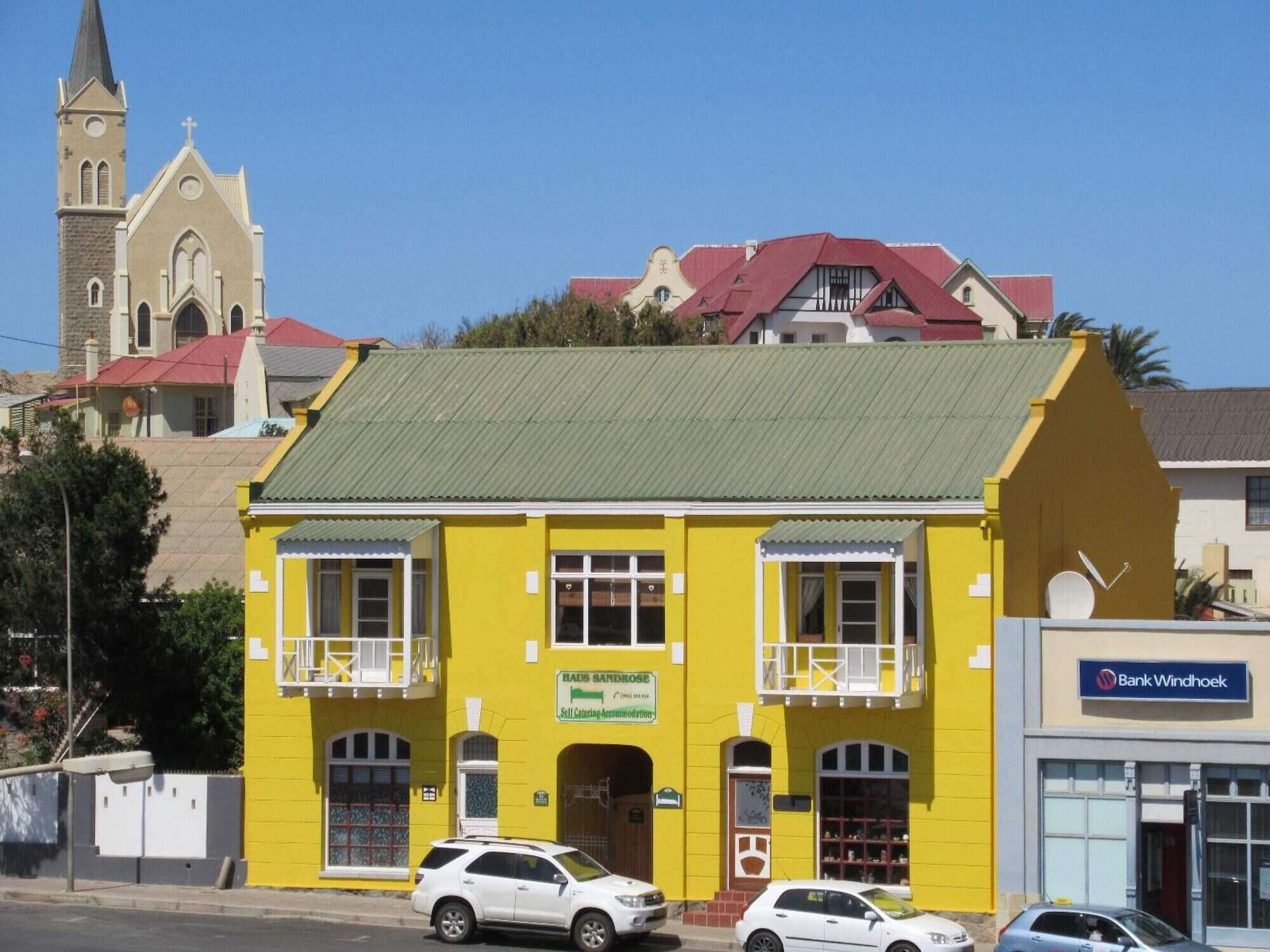
Haus Sandrose
Haus Sandrose offers comfortable self-catering units in the heart of Lüderitz and a good base to explore the many attractions in and around the area.
Travellers’ wildlife sightings in Lüderitz & Aus
Lüderitz & Aus have limited game, but don't forget the desert horses which aren't included in these statistics.

78% success

16% success

6% success

0% success

0% success

0% success
When to go to Luderitz
Our month by month guide: What it's like to visit Luderitz & Aus in Namibia
Jan
Feb
Mar
Apr
May
Jun
Jul
Aug
Sep
Oct
Nov
Dec
Namibia in January
January is at the heart of Namibia’s rainy season. However, as you’d expect from a country dominated by desert and semi-desert environments, the rains are often (but not always) weak and usually quite localised. Some days will be clear, the strong sun raising temperatures to around 30ºC/86ºF; on others humidity and clouds build, sometimes culminating in spectacular thunderstorms. In extreme cases, these generate flash-floods which race down the beds of ephemeral rivers.
Across the country, the greening landscape makes a refreshing change, especially in desert areas. Many birds are in full breeding plumage and migrant species are here in force. In the north, where the rains are more reliable, the abundant water and food allows wildlife to disperse, making it trickier to spot.
- Variable weather: clear, hot & dry, or cloudy & humid with some rain
- Occasional, highly localised thunderstorms
- Many animals with young; birdlife at its most spectacular
- Wildlife dispersed & harder to see, especially in Etosha & the Caprivi
- Very few tourists (apart from the New Year) so rates mostly low
Our view
This is not a great time to visit
Weather in January
Namibia in February
February is the wettest month, but as Namibia is dominated by deserts, the rains are often weak and patchy. The variation in weather across Namibia is significant, too; the central highlands and Caprivi can see some heavy rain. More typically, some February days are clear with a hot, strong sun; others are cooler as cloudy skies build and, sometimes, culminate in short, spectacular thunderstorms. Occasionally these generate flash-floods, bringing ephemeral rivers to life and making travel more challenging.
Across the country, the landscape feels green and alive; insects and smaller animals are more easily seen, and many birds and animals are raising their young. However, small pools in the bush and thicker vegetation can make it hard to spot the wildlife.
- Variable weather: clear, hot & dry or cloudy & humid with some rain
- Occasional localised thunderstorms meander over the landscape
- The bush feels alive; birdlife is at its most spectacular
- Wildlife in Etosha & Caprivi is dispersed & harder to see
- Few tourists, so rates usually at their lowest
Our view
This is not a great time to visit
Weather in February
Namibia in March
March usually sees Namibia’s main rains tailing off, although actual precipitation varies hugely across the country and can be unpredictable from day to day. Many days will be clear, with a strong sun driving temperatures up. On others, clouds will build, and the late afternoon may see a short, spectacular thunderstorm. Such deluges reduce in both frequency and volume as the month progresses.
Across the country, landscapes are often vivid: a “green and pleasant land”. Many birds and animals are finishing raising their young, so smaller animals and insects are in evidence. In the north, where rains are generally heavier, pools in the bush and thicker vegetation can make it difficult to spot larger animals.
- Variable weather: clear, hot & dry or cloudy & humid with some rain
- Afternoon thunderstorms less common as March progresses
- Animals looking sleek and well-fed, after 3–4 months of plenty
- Wildlife in Etosha & Caprivi is dispersed & harder to see
- Few tourists visit during March, so rates often low
Our view
A good time to visit, with pros & cons
Weather in March
Namibia in April
Typically, April is dominated by dry weather; there’s an ever-decreasing chance of rain. Temperatures are now below their peak and continue to fall. Even so, days remain pleasant and warm, but there might be a slight chill in the air at night. The rains usually leave many parts of the country verdant and green, so animals are in fantastic condition – often with fast-growing young in attendance.
With the dust washed out of the atmosphere, photographers make the most of clear air, spectacular landscapes and healthy animals. Stargazers will have clearer night skies as the month progresses. In the game parks of Northern Namibia, water and food remain in plentiful supply, so finding big game can prove trickier than later in the year.
- Becoming drier &, especially at night, also cooler
- Few visitors, except around Easter, so rates remain low
- Wildlife in Etosha & Caprivi remains relatively hard to see
- Migrant birds have started to leave
- Fresh, clean air and often green, verdant landscapes
Our view
A good time to visit, with pros & cons
Weather in April
Namibia in May
By May, Namibia is usually drying out fast as the rains have ended. If they’ve been good, then the land remains green, but wildlife starts to congregate at more permanent water sources. Over much of the country the air quality and clarity can be amazing, making this an ideal month for photography.
Typical days are warm, with crisp, clear mornings and clear blue skies. Evenings are usually cool, and temperatures may dip below 10ºC (50ºF) overnight. Many lodges still charge “low season” prices, although with Namibia’s increasing popularity in recent years, some have started to introduce higher “shoulder season” rates.
May’s good-value rates, increasingly good wildlife sightings, beautiful landscapes and crystal-clear air combine to make this one of our favourite months in Namibia.
- Lovely weather: dry, warm days & cool nights
- The country is drying out although many landscapes remain green
- Fantastic air clarity – ideal for keen photographers
- Visitor numbers are often still low, mirrored by lodge rates
- Wildlife is starting to congregate more around remaining water
Our view
A very good time to visit
Weather in May
Namibia in June
Namibia is dry again. Skies are blue and usually largely cloudless. Days are lovely: warm and dry; nights are cold, sometimes below freezing in the desert. Most swimming pools in Namibia are always outdoors, making them too cold for all except the very dedicated.
Take a warm hat and gloves for game drives, where dawn and dusk will feel particularly chilly. In the north, especially Etosha, wildlife viewing is now into its dry-season pattern, focusing around the waterholes – though the park is still not busy.
Photographers come for superb air clarity, with minimal dust or smoke in the air. Historically, June rates have been low. However, with Namibia’s increasing popularity many lodges now count it amongst their “high-season” months, and request higher prices.
- Clear, bright days with blue skies; cold nights, mornings & evenings
- Great air quality, especially welcome for photographers
- “Shoulder season” for some lodges: lodge rates moderate
- Wildlife gravitates to waterholes, making game-viewing productive
- Some greenery in the landscape, depending on the last rains
Our view
A very good time to visit
Weather in June
Namibia in July
Reliably warm daytime temperatures (upwards of 20ºC/70ºF) and good wildlife sightings make this a popular month to visit Namibia. Rain would be very unusual indeed and clear skies make for great photographs. Once the sun sets, though, temperatures cool rapidly bringing cold nights that may dip below freezing in the desert. Be prepared: dress in layers and expect early-morning and late-afternoon drives, and anywhere coastal, to be cold.
As the land dries and vegetation shrivels, game congregates beside drinking water: Etosha’s waterholes are busy with animals. Across the country, lodges charge “high season” rates; many are fully booked a year or more in advance, especially during European school holidays (from the latter half of July to late August).
- Dry days, warm in the sun, with crisp, cold nights
- Cloudless skies: July is usually superb for stargazing
- The beginning of European school holidays so more families travelling
- Peak season: so high rates and many lodges fully booked far in advance
- A fantastic time of year for wildlife watching, particularly in Etosha
Our view
A very good time to visit
Weather in July
Namibia in August
August is the height of Namibia’s “winter”. Expect cloudless skies and plenty of warm sun in the day, but nights down to freezing in the desert. Dress in layers and bring warm clothes (including hats and gloves) for chilly starts and evenings. Only the hardiest even contemplate using outdoor pools.
It’s 3–4 months since any rain, so the land is dust-dry and much vegetation is golden brown. Many landscapes appear sparse and harsh. Wildlife congregates around available water sources, helping to guarantee good animal sightings.
Namibia is never really “busy” by the standards of Europe or the USA, but August is the most popular time to visit, especially for families. Book early (over a year in advance) if you want to stay at the best lodges.
- Dry days, warm in the sun; cold mornings, evenings & nights
- Cloudless skies in the day; spectacular stars at night
- Busy by Namibian standards: family rooms in particular demand
- Peak season: so high rates and many lodges fully booked far in advance
- A fantastic time of year for wildlife watching, particularly in Etosha
Our view
Fantastic: the very best time to visit
Weather in August
Namibia in September
September is a month of blue, cloudless skies and fantastic wildlife viewing. Rain is almost unheard of. As the month progresses, the days and nights get warmer. In some areas, daily maximums hit around the low 30s Celsius, although low humidity ensures this feels comfortable. The contrast makes the nights seem very cold. The air is becoming dustier, occasionally augmented by smoke from fires – so becoming hazy for photographic purists.
In the national parks, animals congregate around remaining water sources – making September one of the best months for game viewing. Hence it’s one of Namibia’s most popular months for visitors: a “high season” month that is often the time of choice for safari aficionados.
- One of the best months for wildlife viewing
- Warm days & cold nights, with temperatures rising during the month
- Many plants have faded from green to golden brown
- Air can be hazy – with dust & sometimes smoke
- High season rates; many lodges & camps are full 9 months in advance.
Our view
Fantastic: the very best time to visit
Weather in September
Namibia in October
Namibia is usually at its hottest and driest in October. Temperatures build as the month progresses; towards the end, daily highs may exceed 40ºC/100ºF, though with humidity close to zero, even this rarely feels oppressive.
In exceptional years, isolated rain showers may fall in late October. More usually, the end of the dry season sees wildlife watching at its best, particularly in Etosha. The place feels like a desert as spectacular herds of thirsty animals gather around the available water. October is popular amongst wildlife enthusiasts and commands peak-season prices, even if dust and smoke may make the air hazy, challenging photographers. Visitor numbers can fade towards the end of the month, allowing a window for last-minute bookings.
- Probably the most spectacular month for wildlife-viewing in Etosha
- Hot and dry: much of the country feels like a desert
- The air can be hazy with dust & smoke
- It’s peak time to visit, so expect high season rates
- Lodges & camps are full, especially early in October
Our view
A very good time to visit
Weather in October
Namibia in November
November is always a bit unpredictable: sometimes dry and hot; sometimes cloudier and cooler. Typically, mornings are hot and cloudless and clouds appear in the afternoon. Humidity builds and eventually breaks, resulting in spectacular thunderstorms that bring convection rainfall in late afternoons. Such storms are typically sparsely distributed and highly local – being completely absent from desert areas, for example. Places that do get good rain will flush green, with a tangible feeling of new life softening the landscapes. Many mammals give birth to their young.
Once any rains come, wildlife dissipates in search of food, and game viewing in Etosha becomes harder. Conversely, this is a great time for birdwatchers, with migrant species in breeding plumage.
- A very interesting, variable month, depending on the rains
- With rains come an amazing explosion of both vegetation & new life
- Wildlife viewing better in Damaraland than Etosha if it has rained
- Shoulder season: mid-range rates offer great value
- Away from the Namib, showers are more likely later in the month
Our view
A good time to visit, with pros & cons
Weather in November
Namibia in December
December is the first “proper” month of Namibia’s rainy season, and one of its hottest. Clear mornings give way to building clouds and, with luck, the occasional short, spectacular thunderstorm: refreshing and cleansing. These are often highly localised and generally warmly welcomed: most Namibians love rain!
Rains clear the air of dust. Even relatively short showers enable plant life to erupt, carpeting this thirstland in green and providing food for the young animals which abound. Animals disperse widely, which can make game viewing challenging. Many birds are breeding and so sporting their most colourful plumage.
Christmas and the New Year fall within local “summer holidays” – so places to stay can be surprisingly busy, especially in and around coastal towns, where temperatures are cooler.
- Hot and humid; sometimes refreshed by cooling showers
- Landscapes flushed green if/where there has been rain
- A tangible life and energy amidst this often green & pleasant land
- Very photogenic: blooming deserts amidst crystal-clear air
- Best time for birdwatchers; larger animals harder to spot
Our view
This is not a great time to visit
Weather in December
Lüderitz and Aus: In detail
Lüderitz and Aus
Trapped between the desiccating sands of the Namib and the freezing waters of the South Atlantic’s Benguela current, Lüderitz is a fascinating old German town, full of character.
There is only one road to Lüderitz, and bulldozers battle to keep it open through the shifting sands of the Namib. Meanwhile, on the coast, the beautiful buildings of this historic German town sit unchanged. Lüderitz has an atmosphere all of its own: gentle, relaxed, some say sleepy.
Around Lüderitz town
In the evenings, there are a few lively bars, and a handful of quiet restaurants, notable for their seafood. But the entertainment here pales in comparison with Swakopmund. Because of its location, Lüderitz is not somewhere to ‘drop in on’ as you need to make a special journey to come here – but it’s worth visiting for its architecture, its peninsula, and to see a part of Namibia which seems almost unaware of the outside world.
If you choose to visit the area, allow a minimum of two nights to appreciate it, and to see its surrounds properly. Try to avoid Sundays and public holidays, though, when almost everything closes down, and the town is empty.
Tourism is having an impact here, but only gradually. Although several new hotels and guesthouses opened their doors in the years following independence, there’s a marked downturn in the town’s economy, offset only partly by visiting cruise ships. Even the trendy new waterfront development near the harbour is looking a little tired. On the plus side, use of the harbour as the export base for the Skorpion zinc mine near Rosh Pinah has brought considerable new business into the town. Investment in the town’s infrastructure is also ongoing, with plans to develop the old power station near the Nest Hotel – including a maritime museum, craft market and sports facilities – finally coming to fruition with hopes for completion in 2014.
Excursions from Lüderitz
Kolmanskop
This ghost town, once the principal town of the local diamond industry, was abandoned over 45 years ago and now gives a fascinating insight into the area’s great diamond boom. A few of the buildings, including the imposing concert hall, have been restored, but many are left exactly as they were deserted, and now the surrounding dunes are gradually burying them. What a spectacular place this would be for a large party.
Adjacent to the concert hall is a simple café-style room. Do make time to look at the photographs that adorn the walls, from early mining pictures to some chilling reminders of the far-reaching effects of Nazi Germany.
A century since diamonds were first discovered here, it’s now possible to buy diamonds in the ‘Diamond Room’, with prices upwards from N$500. There’s also a display here charting the history of the diamond boom and the people with whom it is inextricably linked.
Boat trips
Weather permitting, boat trips leave the harbour at around 08.00 (departure times vary depending on the season) for a 2½-hour trip – under sail if you’re lucky – past the whaling station at Sturmvogel Bucht, around Diaz Point and on to Halifax Island in search of African penguins, seals and the endemic heavyside dolphin. While visitors are almost guaranteed to see these creatures, keep your eyes open and you’ll spot plenty of birds as well, from scoters and various species of cormorant to oystercatchers and flamingos. Choose from a traditional small schooner, the Sedina which, if you’re lucky, will do part of the trip under sail, or the more comfortable Zeepaard, a motorised catamaran. The Zeepard also offers a sunset cruise, oyster trips, and fishing trips.
Oyster Tours
Oysters are an important part of the fishing industry in Lüderitz, and now visitors can find out about what happens before they reach the table. Tours are at Lüderitz Boatyard, starting in the oyster-processing factory and ending at the Oyster Bar – where there’s the option of oyster tasting with a glass of wine.
Agate Beach
This windswept beach is a 5km drive north of Lüderitz, alongside fenced-off areas of the Sperrgebiet National Park that add to the air of desolation, particularly in winter. En route, a pond to the side of the road attracts small numbers of flamingos and other waterbirds, while nearby the odd springbok or oryx takes advantage of a patch of green around the water-treatment plant. The beach stretches a long way and is fun for beachcombers. The almost-black sand is sprinkled with fragments of shining mica – and the occasional agate. The occurrence of agates depends on the winds and the swell: sometimes you will find nothing, at others – especially at low tide – you can pick up a handful in a few hours. The beach’s braai spots make it a popular place at weekends, and swimming, too is an (albeit chilly) option.
Luderitz Peninsula
To the southwest of the town lies the Lüderitz peninsula, surrounded by sea on three sides yet a rocky desert within. Here, the lower slopes are dotted with a surprising variety of salt-tolerant succulent plants. In winter, if there’s been some good rain, many of these are in flower, affording scope for hours of plant spotting. Around the coast there are some rocky beaches and some sandy ones; all are worth exploring.
The most interesting parts of the peninsula are:
- Radford Bay This is reached shortly after leaving the town, and is often home to a flock of flamingos.
- Second Lagoon Also a popular spot with visiting flamingos, and sometimes the odd stranded motorist.
- Griffith Bay Excellent views of the town across the cold, misty sea, plus a few crystal-clear rocks pools to dabble in. It is named after an American officer who sheltered here and was then killed during the American Civil War.
- Angra Point Believe it or not, there is a golf course here, the Angra Club, its nine holes played exclusively on sand. Although it’s open to the public, locals advise visitors to go with someone who knows the course.
- Sturmvogel Bucht The whaling station here can no longer be visited by boat, but is visible from the sea as part of a boat trip.
- Diaz Point Reached by a short wooden bridge is a granite cross, a replica of the one erected by Bartholomeu Dias, the first European explorer to enter the bay. He sheltered here in the late 14th century, referring to the bay as Angra Pequena, or ‘Little Bay’. There are often seals sunning themselves on the rocks here. Just south of Diaz Point is a grave bearing a stark reminder: ‘George Pond of London, died here of hunger and thirst 1906’. Today a small café saves visitors from the same fate.
From Lüderitz to the South African border, a huge area of the Namib Desert has been off-limits for decades. The Sperrgebiet, which literally translates as ‘the forbidden zone’, covers an enormous 26,000km² (20% larger than Wales!). It protects endless desert plains, treacherous shifting sands and the secrets of ghost towns, abandoned relics of communities that sprang up at the turn of the century, fuelled by a diamond-rush.
It was first declared in 1908 when mining was confined to within a few kilometres of the coast. A coastal belt 100km wide was declared ‘out of bounds’ as a precaution to prevent unauthorised people from reaching the diamond fields.
At the height of restrictions there were two diamond areas:
- No 1 from the Orange River to 26°S, and
- No 2 from 26°S northwards to the Kuiseb, incorporating most of the Namibia’s great dune-sea.
The Diamond Boom
Kolmanskop, or ‘Kolman’s hill’, was originally a small hill named after a delivery rider, Kolman, who used to rest his horses there.
In April 1908, Zacharias Lewala was working nearby when he picked a rough diamond from the ground. He took this to his German foreman, August Stauch, who posted a claim to the area, and then got the backing of several of the railway’s directors to start prospecting. Stauch exhibited some of his finds in June 1908, prompting an immediate response: virtually everybody who could rushed into the desert to look for diamonds. Famously, in some places they could be picked up by the handful in the moonlight.
This first large deposit at Kolmanskop lay in the gravel of a dry riverbed, so soon a mine and a boomtown developed there. Deposits were found all over the coastal region, all around Luderitz. Quickly, in September 1908, the German colonial government proclaimed a Sperrgebiet – a forbidden zone – to restrict further prospecting, and to license what was already happening.
Between 1908 and the start of World War I over 5 million carats of diamonds were found, but the war disrupted production badly. At the end of it Sir Ernest Oppenheimer obtained options on many of the German mining companies for South Africa’s huge Anglo American Corporation, joining ten of them into Consolidated Diamond Mines (CDM) of South West Africa. In 1922–23 CDM obtained exclusive diamond rights for 50 years over a coastal belt 95km wide, stretching 350km north of the Orange River, from the new South African administrators of South West Africa. These were later extended to the year 2010, allowing NAMDEB to control the country’s diamond production for 20 years following independence. Although these rights have now theoretically lapsed, the government is a 50% shareholder in the business, and little has changed.
Meanwhile many small towns like Kolmanskop were flush with money. It had a butcher’s, a baker’s and a general shop; a large theatre, community hall and school; factories for furniture, ice, lemonade and soda water; a hospital with the region’s first X-ray machine; comfortable staff quarters, elaborate homes for the managers – and a seawater pool fed by water pumped from 35km away. Yet Kolmanskop was fortunate: it was next to the main railway line. Often deposits were less accessible, far from water or transport – and many such early mines still lie half-buried in the Namib.
History of Lüderitz & the Sperrgebiet
Bartholomeu Diaz, the great Portuguese explorer was the first recorded European to visit Lüderitz in 1487. He erected a limestone cross at a point he named Angra Pequena or ‘Little Bay’ which is now known as Diaz Point. By the mid-1800’s whalers, sealers, fishermen and guano collectors were gathering in the area and some had set up bases on the shores.
In May 1883 a German trader, Adolf Lüderitz sailed up from Cape Town, landed at Angra Pequena and ventured inland to Bethanie. He struck a deal with the Nama kaptein Josef Fredericks to buy the bay and 8km around it for £100 and 200 rifles. Two weeks later another deal was struck for the sum of £100 and 60 rifles to extend the area to a 32km-wide coastal belt and the German flag was raised. By August 1884 Britain had agreed that Germany could found its first colony here.
The town slowly grew and became a very important base for the German Schutztruppe during their war with the Nama people in 1904-07. The diamond boom started in 1908 when the first rough diamond was picked up. Deposits were found all over the coastal region and around Lüderitz which prompted the German colonial government to proclaim the Sperrgebiet or ‘forbidden zone’ to restrict further prospecting. The town became the base for the diamond mining operations, which became monopolised by Sir Ernest Oppenheimer’s Consolidated Diamond Mines (CDM) after he obtained options on many of the German mining companies. This was the forerunner for the current NAMDEB which has a 50% government ownership. The headquarters of CDM was moved to Oranjemund in 1943 which started the decline of the town. Today tourism, fishing and some diamond diving are what keeps the town alive.
Flora and fauna of the Sperrgebiet
A total of 215 bird species have been identified within the park as a whole, many of them congregating at its southern edge, in the wetlands at the mouth of the Orange River. The authorities claim that 80 mammals live within the park confines, including the solitary brown hyena, and a further 38 marine mammals off shore.
Inland from Lüderitz: Aus
The Desert Horses
On the edge of the Koichab Pan, around Garub, perhaps the world’s only desert-dwelling horses are thriving. On average, the numbers fluctuate between 90 and 300 at any one time, depending on the annual rainfall. In 1996, for example, there were about 134 horses, and the following year at least ten new foals were born, but 1999 saw a sharp drop to just 89 animals. The current number stands at over 200.
Their origins have fuelled considerable controversy over the years. Some considered that they were descended from farm animals that had escaped, or horses that the German Schutztruppe abandoned at the start of World War I. Others proposed that they came from Duwisib Castle, near Maltahöhe. By October 1908 Captain Von Wolf, Duwisib’s owner, had assembled a herd of about 33 animals, namely ‘2 imported stallions, 17 imported mares, 8 Afrikaner mares, 6 year-old fillies’. He was a fanatical horseman, and by November 1909 he had expanded this collection to ‘72 horses. Mares: 15 Australians, 23 others, 9 thoroughbreds. Rest: Afrikaners and foals. 2 imported thoroughbred stallions’. Von Wolf left Duwisib in 1914 and was later killed at the battle of the Somme. Yet there were reports of wild horses near Garub in the 1920s, ten years before Von Wolf’s farm manager reported the loss of any horses.
New research conducted by biologist Telané Greyling in 2005, with the support of the MET, as well as Klein-Aus Vista and the Gondwana Desert Collection, suggests that the herd was drawn together from all of these sources, as well as those of the South African Army. As a result of this research, plans have been drawn up to protect the welfare of these animals that are neither domestic nor natural game, with resources to be raised in part by improving tourist options.
Observe the horses in March, surrounded by a wavy sea of fine green grass, and their situation seems idyllic. But see them on the same desolate gravel plains on an October afternoon, and you’ll appreciate their remarkable survival.
The weather & flora around Aus
Aus’s weather can be extreme, very cold in winter and hot in the summer. It is also unpredictable – which stems from its proximity to the Cape – although the winter rain, and its associated flora, is more pronounced in the area around Rosh Pinah.
Sometimes Aus’s weather will follow a typically Namibian pattern; at others it will have the Cape’s weather, with showers in winter, and occasionally even snow. If heavy or prolonged, this rain can cause a sudden flush of sprouting plants and blooms, rather like the ‘flower season’ in Namaqualand, south of the border.
Many unusual plants have been catalogued here, including a rather magnificent species of bulb whose flowers form a large globe, the size of a football. When these seed, the globe breaks off and rolls about like tumbleweed. Endemic to this small area is the yellow-flowered Aus daisy, Arctotis fastiosa, which grows only within a 30km radius of the town (a slightly more orange sub-species is found at Rosh Pinah). In winter, the yellow kuibi or butter flower, Papia capensis, brightens up the plains at the foot of the mountains, interspersed with the blue sporry, Felicia namaquana, and the bright purple fig bush. Higher up, the mountain butterflower holds sway, the western slopes are scented by wild rosemary, and the Bushman’s candle is to be found – although here it is yellow or, rarely, white, unlike its bushier pink cousin in the desert to the west.
History
When the German colonial troops surrendered to the South African forces in 1915, a camp for the prisoners of war was set up a few kilometres outside what is now Aus, just off the C13 about 1km south of the B4. At one point 1,552 German POWs were held here by 600 guards. It seems that the German prisoners worked hard to make their conditions more comfortable by manufacturing bricks, building houses and stoves, and cultivating gardens. They eventually even sold bricks to their South African guards.
The camp closed shortly after the end of the war, and little remains of the buildings bar a few ruined huts, although a memorial marks the spot. On a hill 1.3km to the east of town, however, is a small cemetery maintained by the Commonwealth War Graves Commission. Here lie 61 prisoners of war, and a further 60 members of the garrison, most of them victims of a flu epidemic in 1918.
Map of Luderitz
Choices for where to stay in Luderitz
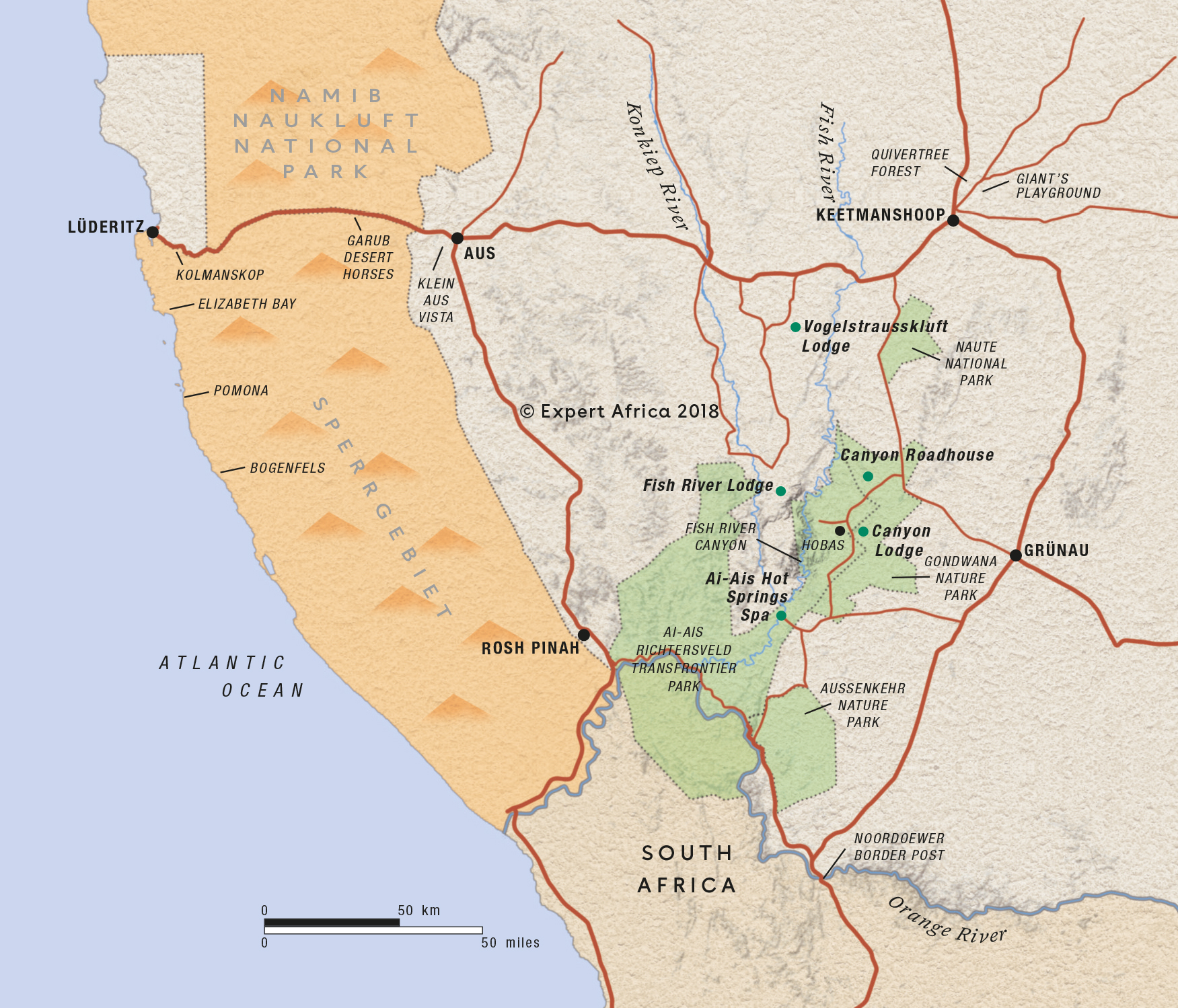
Luderitz: Holidays
These Trip Ideas featuring Lüderitz offer a chance to potter around this quirky and fascinating old German town, on the southern part of Namibia’s coastline. Sandwiched between two vast mining areas, there is only one road to Lüderitz; past the famous herd of desert horses, and across the sands of the Namib Desert.
Take in the interesting architecture and colourful buildings; visit the eerie and photographically spectacular ghost town of Kolmanskop, go on a boat trip to see the African penguin colon, or explore the spectacular peninsular of beaches and bays – there’s plenty to do on your holiday to Lüderitz.

Quiver Tree Self-drive Safari
14 days • 7 locations
WINDHOEK AIRPORT TO WINDHOEK AIRPORT
An offbeat Namibian self-drive adventure exploring the epic Fish River Canyon and fascinating Kolmanskop ghost town in the south, before turning north via the classic highlights of Sossusvlei, Swakopmund and Damaraland.
US$3,520 - US$3,730 per person
Best 5 hotels and places to stay in Lüderitz
Lüderitz has several hotels varying from the upmarket to several more personal establishments. A proliferation of self-catering guesthouses reflects the long-term nature of many visitors to the town, but there’s also a backpacker’s lodge and a windswept campsite (complete with a super lighthouse). Ask us for more details of what's where, and what's likely to suit you best!

Eagle's Nest
The rustic chalets at Eagle's Nest on the Klein-Aus Vista reserve make a scenic base for hiking in the mountains, or just to enjoy the solitude.

Nest Hotel
With ocean views from all its rooms, the Nest Hotel is perfectly placed to appreciate the best of Lüderitz.

Desert Horse Inn
On the edge of the Namib Desert, the Desert Horse Inn makes a comfortable base for hiking, visiting Lüderitz, or seeking out the area's feral horses.

Island Cottage
Island Cottage offers simple but comfortable self-catering apartments in an attractive if desolate location overlooking Lüderitz Harbour.

Haus Sandrose
Haus Sandrose offers comfortable self-catering units in the heart of Lüderitz and a good base to explore the many attractions in and around the area.
Excursions in Luderitz
Optional, extra day-trips and excursions that are possible while you’re staying in Luderitz. Talk to us: these excursions are usually best arranged before you go.
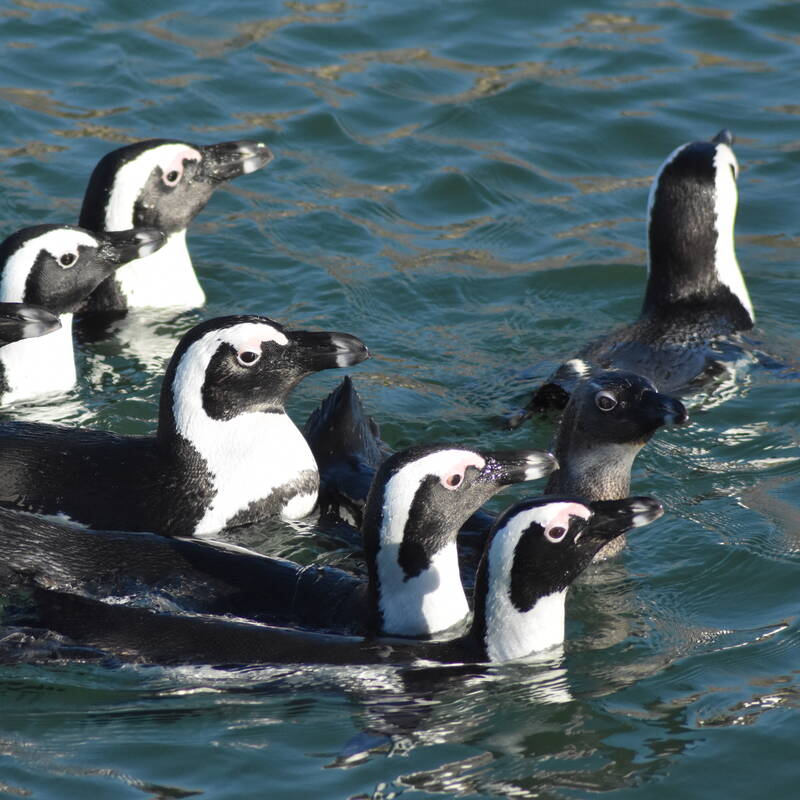
Halifax Island boat trip
2 hours
Climb aboard the comfortable catamaran Zeepaard in search of the marine life of Namibia’s wild coastline – among them Cape fur seals, Heaviside dolphins, African penguins and perhaps even humpback whales.
More about Halifax Island trip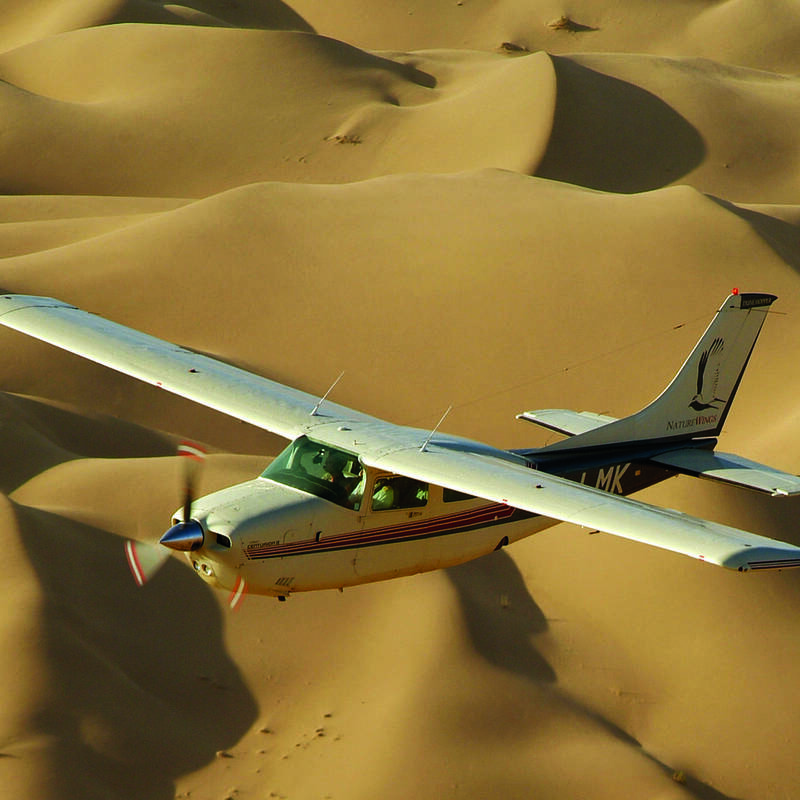
Scenic flights in Namibia
Variable, depending on the flight
Namibia is famed for its stark beauty and boundless desert vistas and there is no better way to soak these in than from the air. A scenic flight gives you a unique perspective on this stunning and varied country, and may even provide a bird’s-eye view of areas that are out of reach to those restricted to terra firma.
More about Scenic flights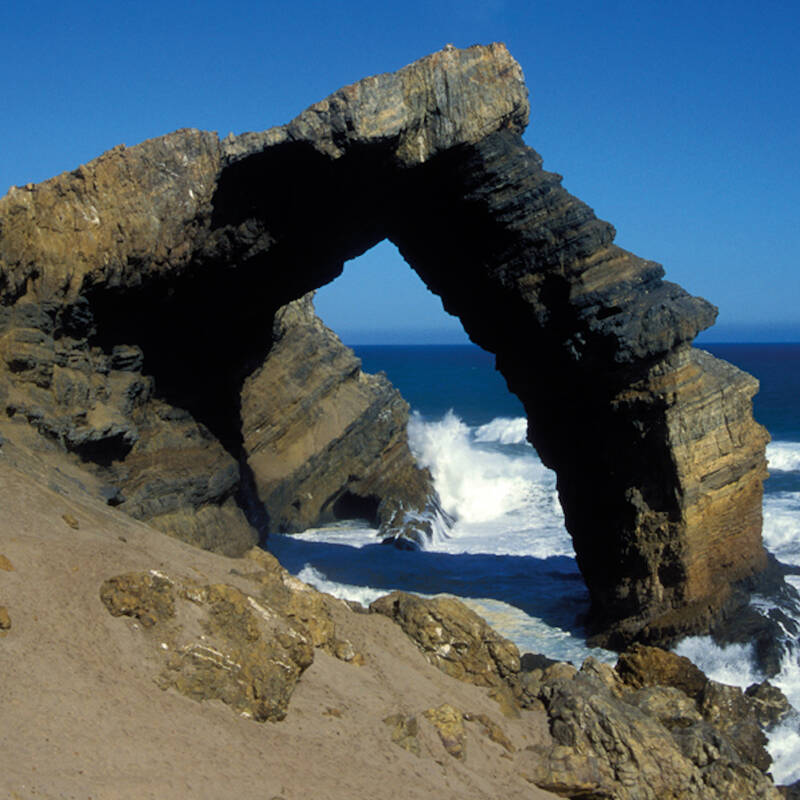
Sperrgebiet tour
Full day, including lunch
Discover the hidden gems of the Sperrgebiet National Park on this exceptional all-day trip. There may no longer be diamonds for the taking, but in their place you’ll find ghost towns, the rusting relics of the diamond industry, geological formations, and extraordinary desert flora, largely untouched for generations.
More about Sperrgebiet tour
Looking for inspiration on where to travel next?
Visit our trip chooser to explore your options and find inspiration for your perfect African adventure
Inspire me